 December 2, 2013 December 2, 2013
By Pepper Parr
BURLINGTON, ON. It was her third show in her career as an artist. This time Cheryl Miles- Goldring was exhibiting the work that came out of her trip to Newfoundland last summer. Water, particularly steams and falls, are a challenge for the artist but she clearly caught the sense of the out ports that are bed rock of Newfoundland cultural history. There is something about a clothes line with items flapping in the breeze that has Newfoundland written all over it.
 Everything about Newfoundland somehow gets summed up in a painting of a clothesline flapping in the salt air wind. Miles-Goldring has a tendency to create small triptychs. She has done this in the past to wonderful effect and did it again with her Newfoundland collection.
Earlier in the week we crossed paths with the Mayor and asked how he was going to cover both the Santa Claus parade and be at the exhibit on Sunday – they were being held on opposite sides of the city. “I know where my responsibilities lay” said the Mayor who added that the parade is not something that requires his attendance. Well he got that one wrong – the Mrs. made it clear that the Mayor will be in the parade and he can scoot over to the exhibit when his day job is done.
We saw the Mayor at close to 3:30 in the afternoon trudging along James Street with Burlington Old Timers Hockey League paint can collecting donations within sight of city hall. It was going to be a bit of a dash to get to the Seaton Gallery out by RBG before the exhibit ended.
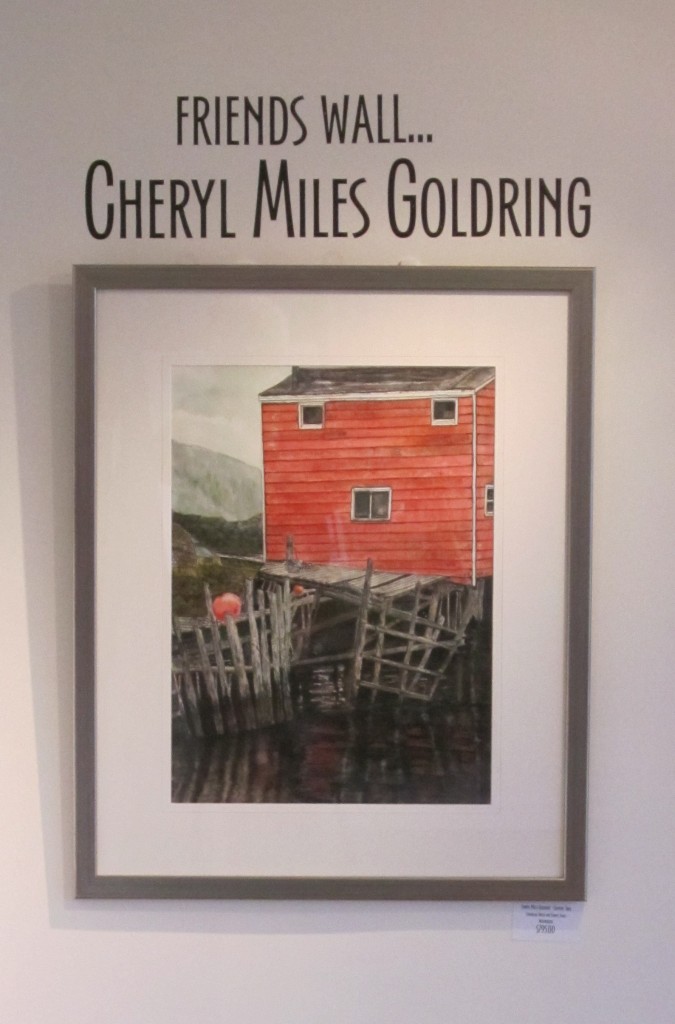 The Seaton Fine Arts Gallery has created a space where artists can hang their work during exhibits. Teresa Seaton, head honcho of the gallery does her stained glass work in the gallery as well. The work that Miles – Goldring does is always shown at the Art in Action Studio Tour but is has a greater reach than just art shows and the walls of the people who buy her art.
Miles – Goldring makes small prints of some of her work and has ‘hasty notes’ made up with some of her art on the front.
As you can imagine her art adorns a large portion of the walls in the Mayor’s office as well. There is a tradition in the municipal world for small gifts to be given to visitors who call on the Mayor in some official capacity. Miles-Goldring came up with the idea of giving the Office of the Mayor a selection of framed prints and boxes of hasty notes that he could give as gifts to visitors. She pays for the framing and the printing and keeps meticulous records should anyone even suggest she is being paid for the gifts. The pity is that Miles-Goldring feels she has to keep records at all. If she said she pays for the work done that should be more than enough.
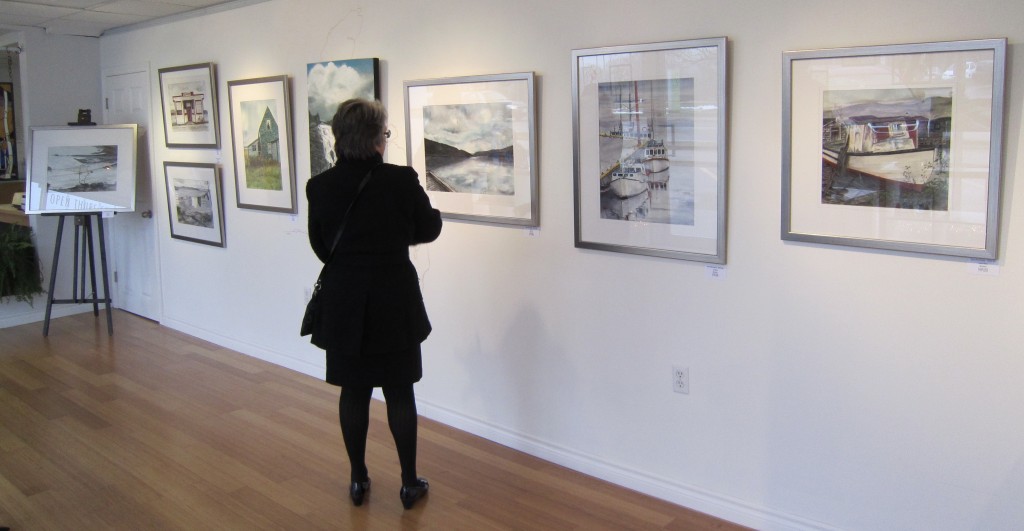 The Friends Wall featuring the Cheryl Miles-Golding Outport Tour collection. The exhibit at the Seaton Fine Arts Gallery seems to be part of an initiative to make that location the place to exhibit local and visiting artists. The announced closure of the Artists Walk in the Village Square doesn’t leave too many locales for artists. The Village Square by the way is no longer for sale – was it ever really for sale?
What baffles many is the difficulty in booking the Fireside Room at the Burlington Art Centre. We hear far too many artists complaining about that problem. Is it just a scheduling problem?
For Miles Goldring the question is – what will she schedule next?


By Staff
December 1, 2013
Burlington, ON. Halton Regional Police, Burlington-3 District Strategic Support Team, executed a Controlled Drugs and Substances Act search warrant at a residence on Ross Street in the City of Burlington.
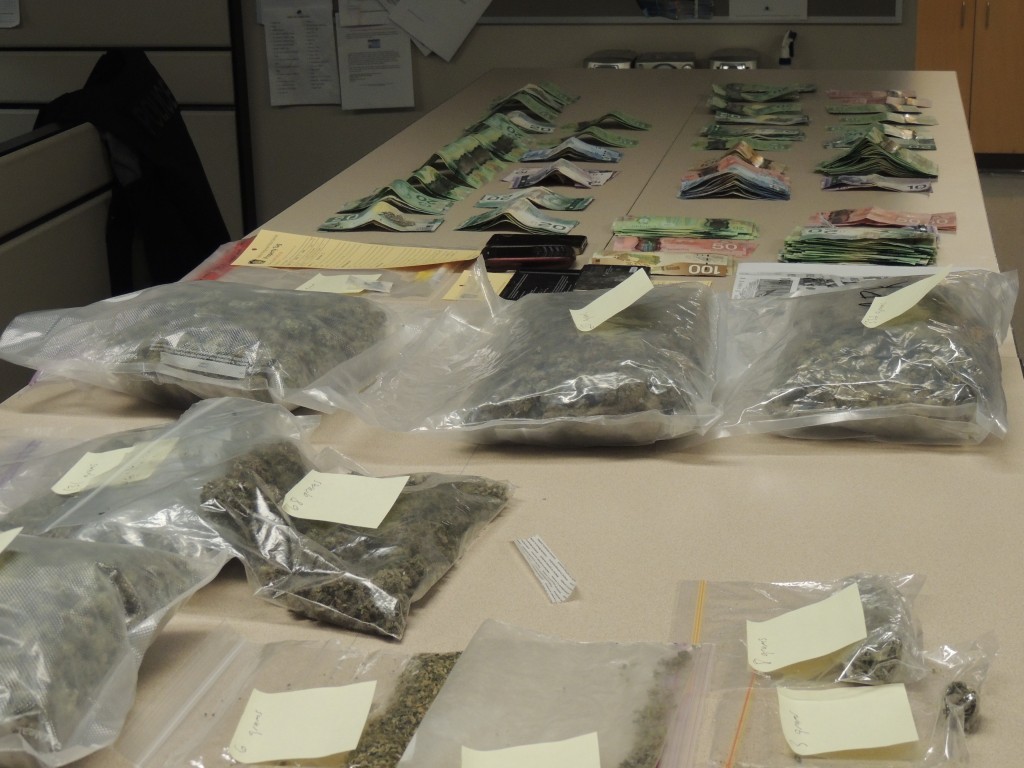
- There goes the Christmas money – and how are the people higher up the drug food chain going to get paid with all the money gone?
The warrant was as a result of a drug trafficking investigation. Seized as a result of the warrant and subsequent arrest was;
• $11,100.00 dollars,
• 1307 grams of marihuana (approximately 46.7 ounces/ 2.87 pounds ),
• 4 grams of Cocaine,
• 8 grams of Methamphetamine
• 1 gram of MDMA.
• a digital scale,
• cellular phones
• and packaging material
The drugs have an approximate street value of over $14,000.00.
The accused, Maxwell FOLKES-KAIZER- 24 years of Burlington, was located inside the premise and was subsequently arrested.
FOLKES-KAIZER was charged with:
• Possession for the Purpose of Trafficking a Controlled Substance and, four counts of Possession of a Controlled Substance
He is to appear in Milton Court on January 7, 2014.
Investigators remind the public to utilize Crime Stoppers to report any illegal drug, gun or gang activity at 1-800-222-TIPS(8477), through the web at www.haltoncrimestoppers.com or by texting “Tip201” with your message to 274637(crimes)

 November 29, 2013 November 29, 2013
By Pepper Parr
BURLINGTON, ON. Every Council member does everything they can to meet with their constituents. They take telephone calls, the use email and every other communications tool they can find. While I’ve yet to see a member of this Council walk around wearing a sandwich board – you never know.
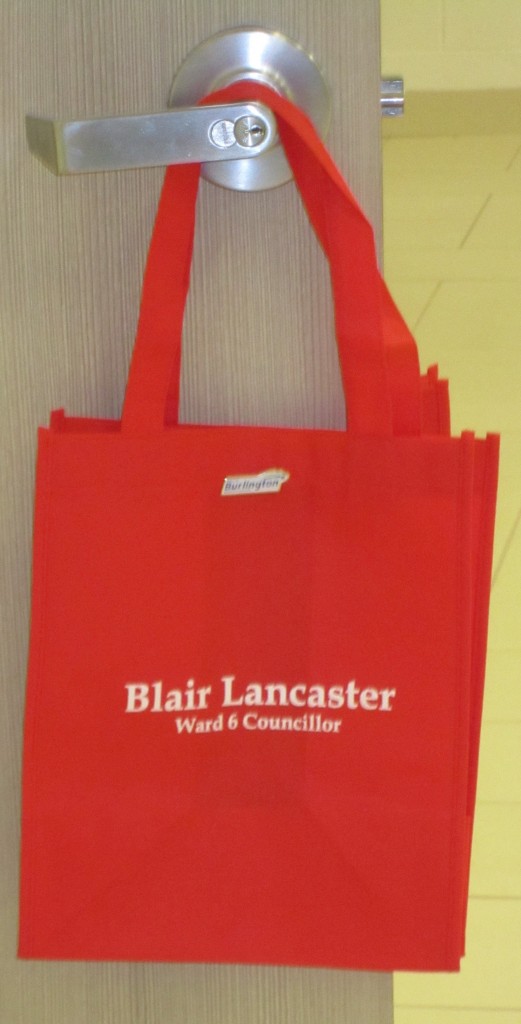 Smart politicians create a brand for themselves – Lancaster, who has always had a smart sense of style, appears to have gone for the “red bag look”. Might work. Members of Council hold meetings in their wards and they go to events. The Mayor has gone to more than 300 events so far this year. Meed Ward holds what amounts classroom sessions in Ward 2 while Jack Dennison holds meeting at the sports club her operates n a room with a fireplace and bowls of popcorn set out.
Last weekend the Alton Campus opened and we wondered when the Ward 6 council member would hold a meeting in the spanking new campus. It didn’t take long – Blair Lancaster invited her constituents to meet with her in one of the community rooms.
There she was, patiently waiting for someone, anyone from the community to show. After waiting for an hour a constituent did show up. We left at that point.
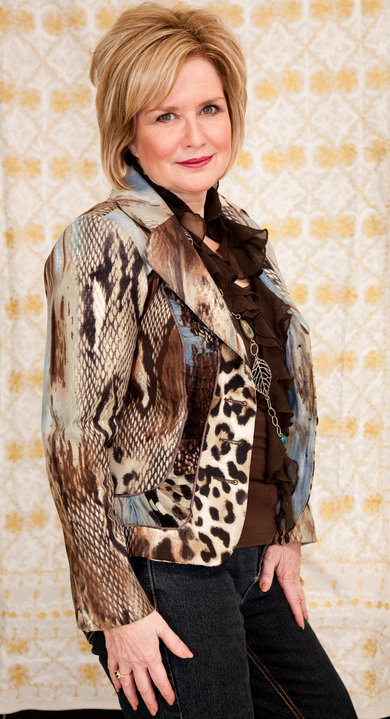 Started as a model and kept the ability to talk to the camera. Lancaster explains that in Alton people are busy, they are commuters and they have families to feed – and she added, she did meet a lot of people at the Campus Open House.
Lancaster finds that she gets an audience when there is an issue an on at least one occasion she has had people lined up outside a meeting room waiting to get in.
Each council member has their own style, approach and relationship with their Council member. John Taylor gets a good turn out from what is to a large degree a rural community. His meetings are almost like a crokinole game being held in a church hall. They know him, they like him, they respect him and they trust him.
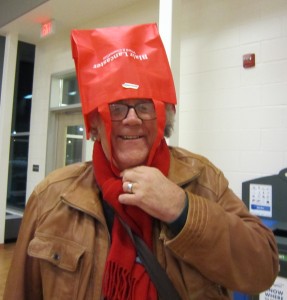 Former model charms reporter into showing her latest fashion statement. Lancaster is still working out her relationship with her ward – with Alton being as new as it is it will take some time for them to get to know her and her to get to know them.
With an election less than a year away – Lancaster does have her work cut out for her in Alton. She has a Carol Singing event planned for the middle of December – the 16th – but wait for confirmation on the date and time. Hot chocolate and cider are on the menu.
Background:
John Taylor’s type of ward meting:

 November 29, 2013 November 29, 2013
By Pepper Parr
BURLINGTON, ON. It was the 25th Anniversary celebration for Crime Stoppers in Canada. Lots of people from the police community taking the decent sized audience through the statistics and telling us about the role Crime Stoppers plays.
Carolyn Wallace spoke on behalf of Burlington MP Mike Wallace – she was as good a speaker as her husband, perhaps a bit better.
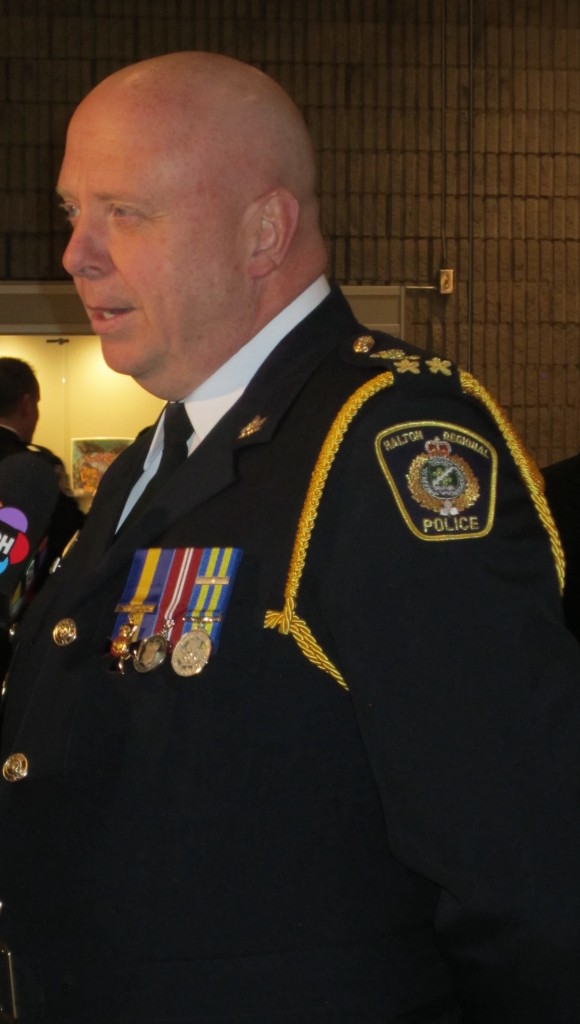 Halton Regional police chief Stephen Tanner The chief of police spoke and then introduced a tall, dark-haired, attractive willowy woman who quietly said she was Sharlene Bosma. The room was suddenly quiet, almost tight.
“It was seven months ago” explained Sharlene “that my husband left the house never to be seen by any of us again.
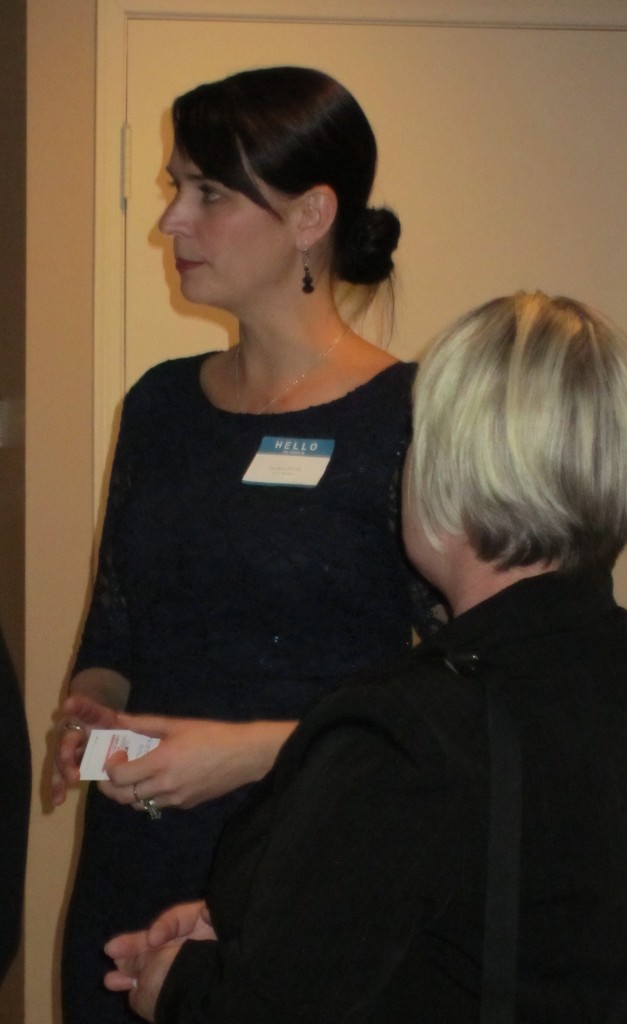 Sharlene Bosma with friends after her remarks to Halton Crime Stoppers. “I knew about Crime Stoppers,” she said, “I had seen it on TV but it was never a service you expect to use. I knew about the tips people could send in to Crime Stoppers.”
“We were so numb that first few days – we were desperate but we didn’t know what to do. The house became Command Central and then, quite quickly, there were all these posters put out by Crime Stoppers.
“Family and hundreds of friends were around the house” she continued – pausing several times, working hard to keep it together.
“We had no idea how many calls there were. At one point the police email service was overloaded and Crime Stoppers was able to fill the gap.”
“We were so desperate – waiting and waiting.”
“Never underestimate” she said “the value of family, friends and neighbours.” Each pause was a painful effort to keep it together.
“The terrible things people do to each other” brought the hearts of all of us in the room to our throats.
“Things like this” she continued, “never happen to us”
“Then it did”
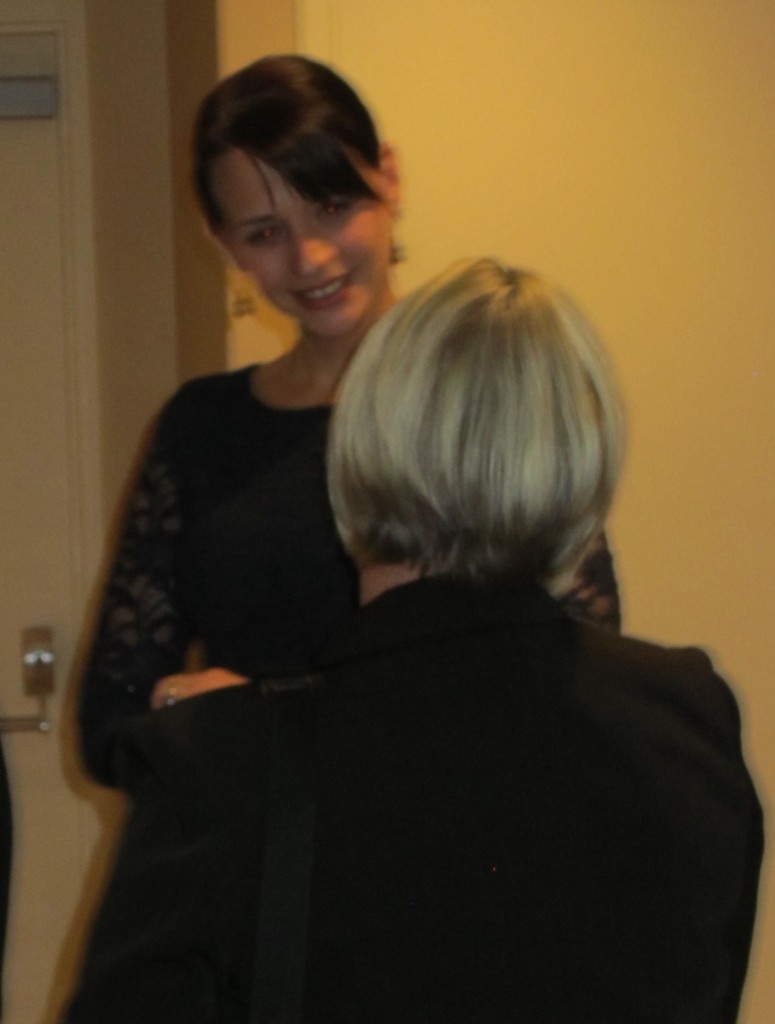 Small smiles were possible And at that point most of the people in the room were about to lose it as we heard an incredibly strong human being lower her head and say “Thank you”.
The applause was both significant and sustained. The people in the room were law enforcement types. Tough people who deal with the worst day in day out. Dennis Farr, a former Halton intelligence officer and an accomplished interrogator was there along with former Halton Chief of Police Gary Crowley
Cal Millar, former head of Crime Stoppers in Halton was on hand along with the new police officer servicing as police liaison with the organization.
The audience had heard the statistics about the vital role Crime Stoppers plats in keeping the community safe.
Claire Gibbon, a Crime Stoppers board member, talked about when her home had been burglarized and how Crime Stoppers helps us “keep one another safe.”
To date for 2013 Crime Stoppers was responsible for 1011 arrests and 2035 clearances. A clearance is a crime for which there was no suspect but found later to have been committed by a person under arrest.
The fact and the figures mattered but what I think most people took away was the strength and the beauty with which Sharlene Bosma presented herself and the thanks she gave “for stepping in when I needed you most.”

 November 28, 2013 November 28, 2013
By Pepper Parr
BURLINGTON, ON. The city advanced the FREE PARKING in December by a day to give the downtown merchants a chance to get it on the Black Friday craze.
This year – look for this decal in the windows of stores in the downtown core.
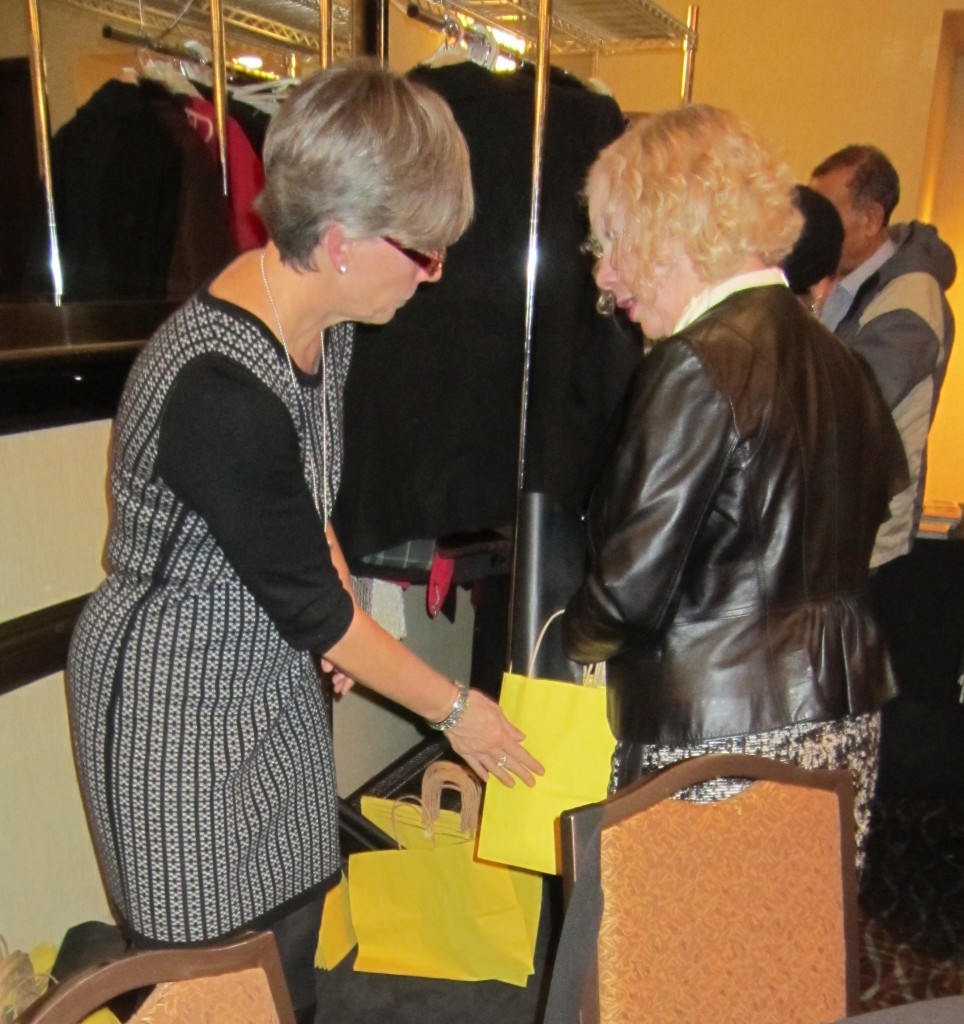 if you were a member of the BDBA attending the Awards night – you didn’t get to leave without a couple of dozen yellow bags to use as part of the shop the Neighbourhood promotion. Jenn Walker – head of the Marketing Committee hands them out. The merchants in those stores might put your purchase in a small yellow shopping bag. And, if you choose to stroll along Brant Street swinging that bag someone might approach you and pop a small gift item into your bag.
 The downtown merchants have used special shopping bag promotions in the past. Last summer we all got to see BDBA General Manager Brian Dean in shorts that must have been on sale somewhere. It’s part of the Burlington Downtown Business Association’s Shop the Neighbourhood – a promotional tie in with the Yellow Pages people who piloted in Oakville recently. Shop The Neighbourhood is an initiative of Yellow Pages Group (YPG), a company with a century-long legacy of working with Canada’s small businesses, helping them attract customers and contributing to the growth of local economies.
BDBA has done this sort of thing in the past – quite successfully.
This season with free parking for all of December the major push on the part of city hall to get people downtown adding an additional promotional consideration won’t hurt.
 It’s a one day push – the idea is to get people to be downtown and not be ticked off with having to pay parking. It’s a one day push – the idea is to get people to be downtown and not be ticked off with having to pay parking.
Burlington has let itself get charmed into that free parking at the malls – which isn’t free but rather a cost built into the rent merchants in mall locations pay.

 November 28, 2013 November 28, 2013
By Pepper Parr
BURLINGTON, ON. At a Standing Committee meeting more than a year ago city General Manager Scott Stewart told a group of Soccer Moms that they needed to work with the then Acting Director of Parks and Recreation Chris Glenn to resolve the issue of scheduling time in the soccer domes at Sherwood Forest Park.
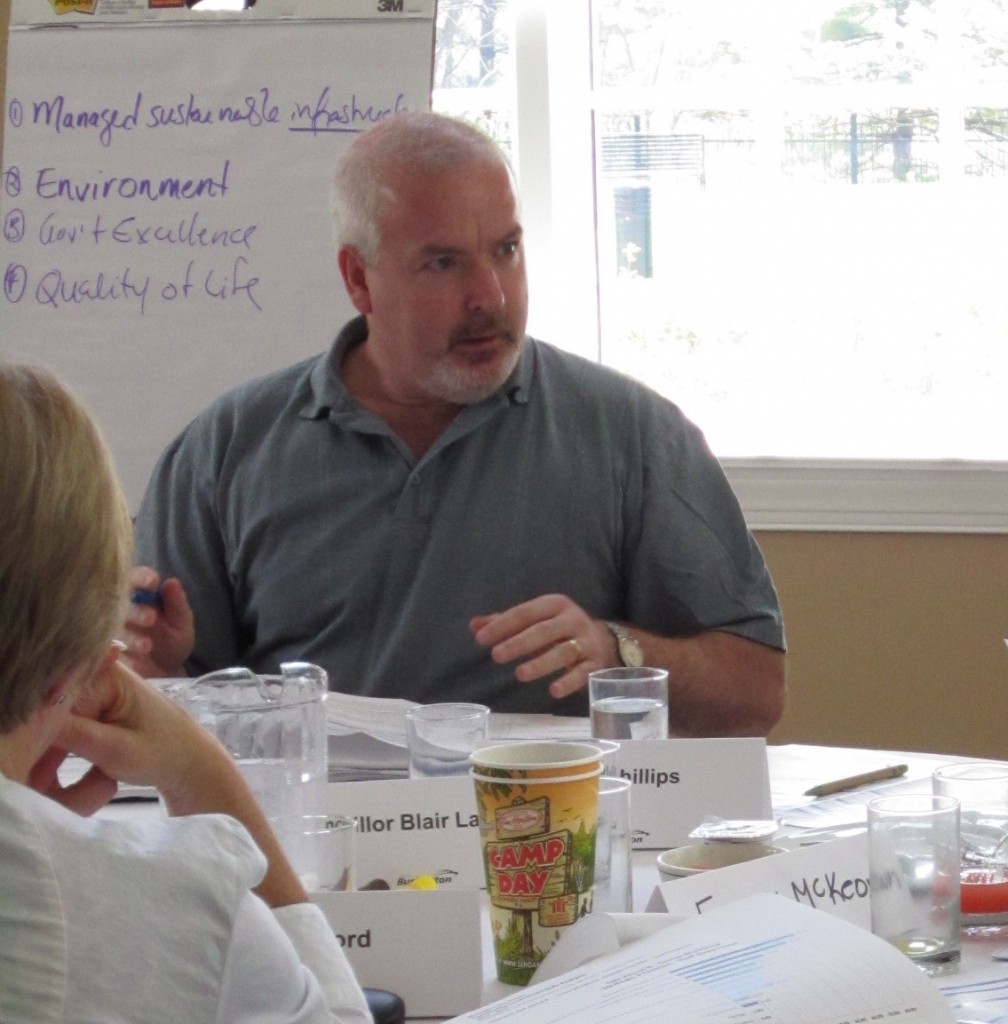 When Scott Stewart wants to make a point – you get the look. We got the look – and we got the point. Stewart closed his remarks with words to this effect: If you can’t work the problems out with Mr. Glenn then you will have to work them out with me – and you don’t want to have to work with me.
We were just getting used to Mr. Stewart at the time.
A few weeks ago we did a piece on what the public expects its taxes to pay for and we wrote the following cut line beneath a picture of the completed pier.
What scares the daylights out of many informed taxpayers is city hall finding that they really don’t know how to complete a project successfully. The Pier was a disaster from a construction management point of view. The King Road grade separation went very well – it was managed by CN Rail. The Alton project went exceptionally well – it was led by the Board of Education.
Mr. Stewart invited us out for a conversation, which at the time we didn’t see as one of those “don’t want to have to work with me” situations. We were wrong then – it was a need on our part to work things out with the General Manager. We were wrong with the cutline as well. The cut line has since been changed.
Stewart was not with the city when the first pier contract was awarded. He was very much in place when the second contract for the pier was awarded and he was on top of, if not all over, every problem that cropped up. The planned wind turbine being one of the problems.
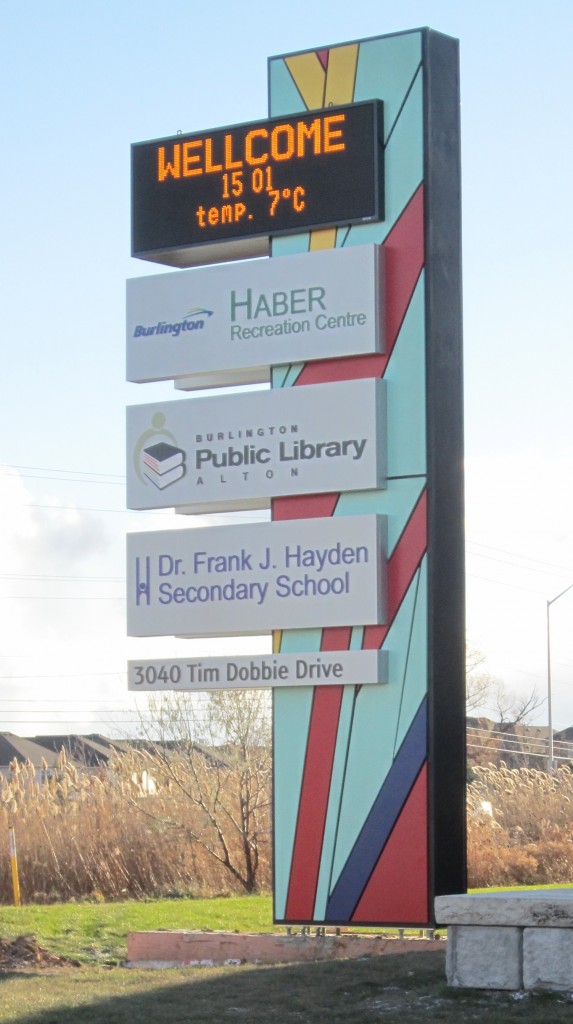 We all make mistakes – this one was just so very public. The building of the Alton complex was a three partner situation with the Board of Education actually awarding the contract and city engineers involved on a daily basis. It wasn’t always the smoothest of working relationships but it did get built on time and on budget and the public has taken to what was built. They took to the pier very positively as well.
Now we wait for the official opening of the King Road grade separation which will see the Mayor drive through early in December. Some had hoped his worship would choose to ride a bicycle.
Somewhere in the crowd Scott Stewart will be standing with his team – pleased with the way the project went and delighted that the railway had to pay for most of the work that was done. When we do the piece on that opening we will be absolutely certain that we get the cut line right.
There was a plus side to all this: Stewart picked up the tab for the get together.

 November 28, 2013 November 28, 2013
By Staff
BURLINGTON, ON. Burlington has two Service Ontario locations: places where you can go and see a real, live, breathing civil servant just waiting to help you.
The Lease must have been up at one of the old locations – either that or the place needed a paint job and it easier to move.
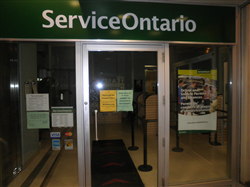 Two locations in Burlington. As of Monday, December 2nd the western Service Ontario location will be:
1250 Brant St. as of Monday at 9 AM.
The second Service Ontario location is at:
3455 Fairview Street.
The hours of operation at the new centre are:
Monday to Wednesday and Friday — 9 a.m. to 5 p.m.
Thursday — 9 a.m. to 7 p.m.
Saturday — 9 a.m. to 1 p.m.
 Renew a Drivers’ license online: How do they take the picture? There are a number of services that can be handled on-line: Ontario is the first province in Canada to allow drivers to renew their licenses online.
ServiceOntario offers more than 40 services online — 24 hours a day, 7 days a week.
The government maintains it has exceeded a 99 per cent success rate for its online service guarantees. Last year, Service Ontario processed more than 16 million online transactions.

 November 28, 2013 November 28, 2013
By Pepper Parr
BURLINGTON, ON. It was a natural! With a men`s clothing store and a golf tournament – you can just imagine how wild the guys are going to get with those brightly coloured trousers.
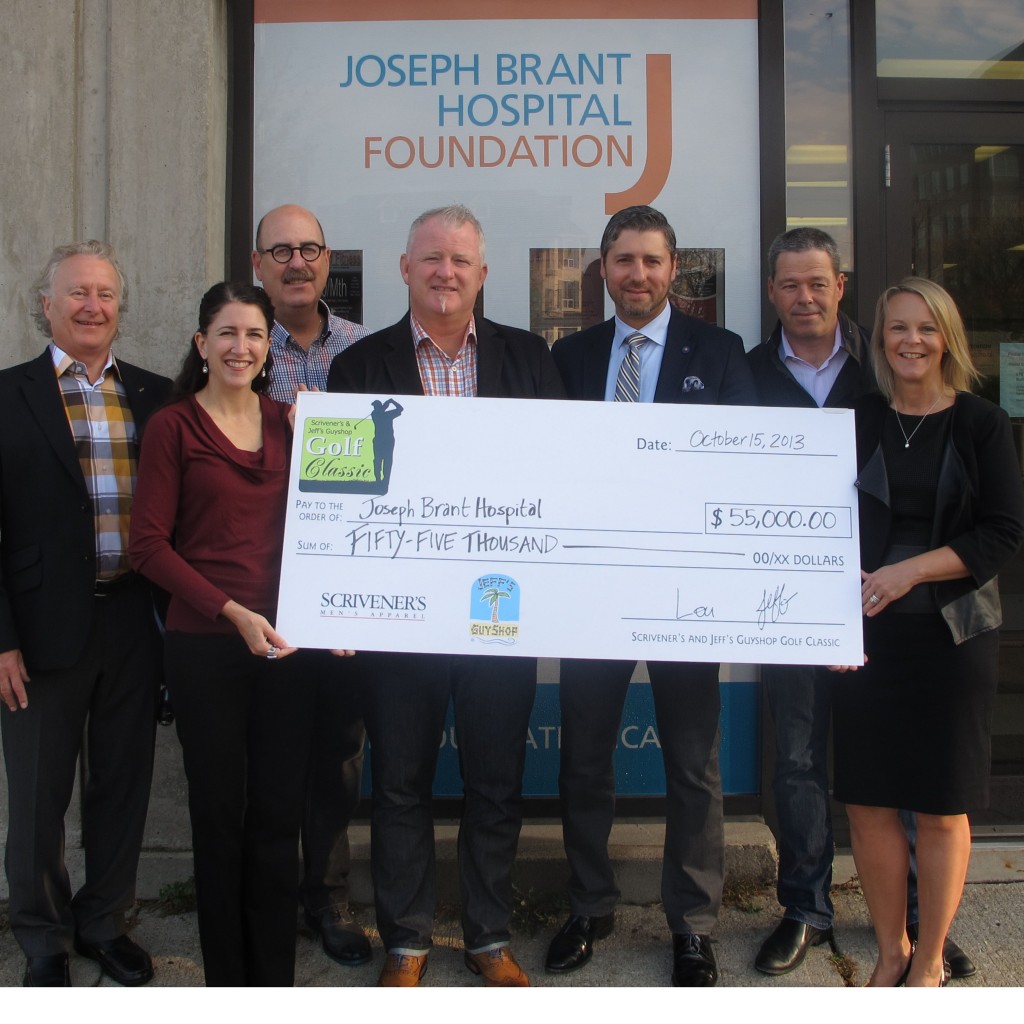 Scrivener’s and Jeff’s Guy Shop organized a golf tournament that raised $55,000 for the hospital. This was their 3rd tournament. Women can wear bright colourful clothing almost any time they wish – men get stuck with the blue suit – with stripes if you think you`re really important, and maybe a snappy tie, but that`s about it for the guy side.
Mix in a golf tournament fund-raiser for the hospital – and you add another $55,000 to the $60 million the Joseph Brant Hospital Foundation has to come up with.
Scrivener`s, the more sedate side of clothing men and Jeff`s GuyShop have raised a total of $135,000 during the three annual golf tournaments they have sponsored.

 November 28, 2013 November 28, 2013
By Staff
BURLINGTON, ON. If there are leaves left on your property – you`ve got one more chance before you begin thinking about getting the Christmas tree up.
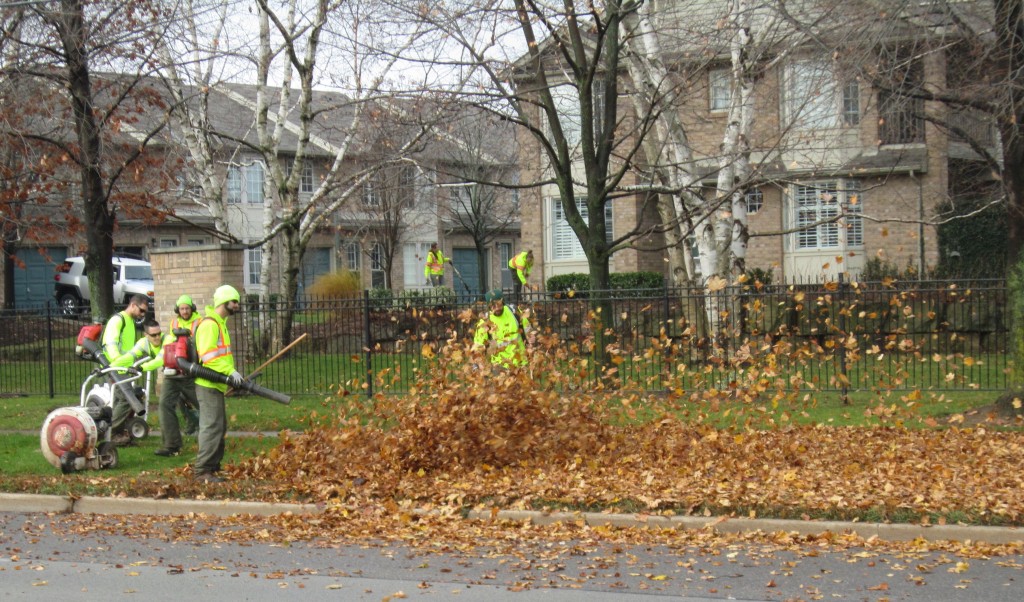 This crew will probably not be clearing the leaves from your property. They were working along New Street when this picture was taken. The city has a leaf pick on December 2nd and another on December 9th – and that`s it for this year.
The map set out below tells you where the pickups are taking place.
The city has some rules:
Please follow the guidelines below to help ensure a timely and cost-effective leaf collection program:
- Please have your loose leaves raked and ready for pickup just prior to the start date for your collection area.
- Be mindful of collection dates and avoid raking leaves to the road too early.
- Place leaves up to the edge of the curb or roadway (but not on the road) in a loose pile so city equipment can reach them.
- Ensure loose leaves are not over catch basins or in the ditches in front of your home .
- Please make sure leaves do not contain branches or other debris. Leaves mixed with other waste cannot be collected.
- Avoid placing leaves on sidewalks and walkways.
- Remove basketball nets, parked vehicles and other obstructions from the road to allow city crews clear access to leaf piles.
- Do not place garbage bags, garbage bins, Blue Boxes or GreenCarts on top of loose-leaf piles
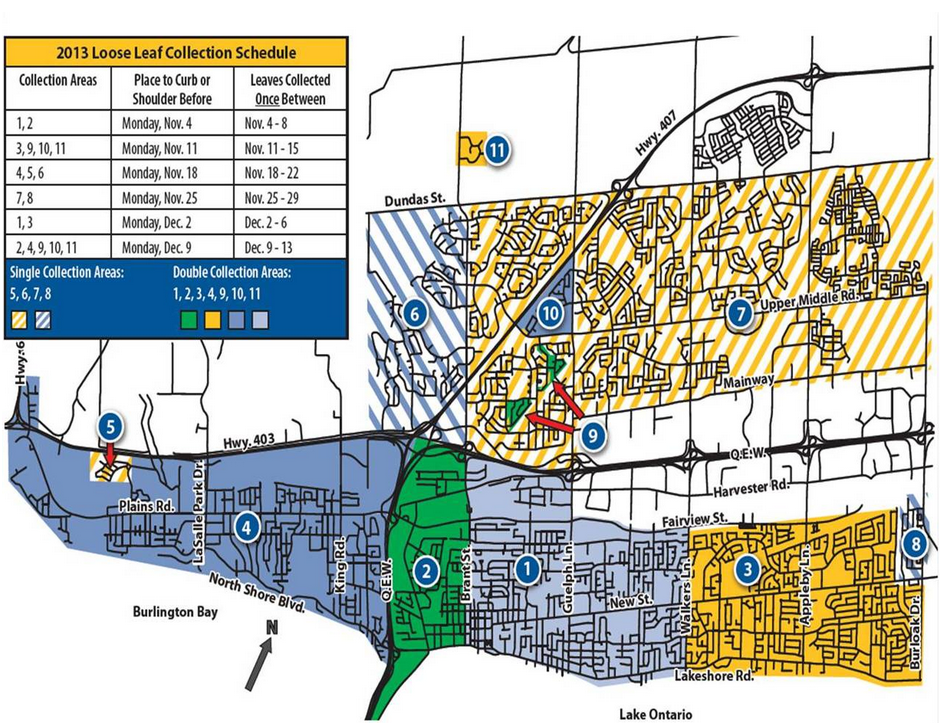

 November 28, 2013 November 28, 2013
By Pepper Parr
BURLINGTON, ON. It has been a banner week for BurlingtonGreen. They held their annual meeting, installed a very strong board and heard a stirring story about how a quarry proposal in Dufferin County was defeated. Later in the week after a very bumpy ride through several Standing Committees they got a sole sourced agreement with the city to continue developing the community garden concept that has done so exceptionally well.
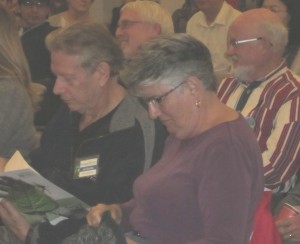 Gloria Reid, on the right with her husband – a welcome addition to the BurlingtonGreen board. Let’s take this one step at a time: The new board is made up of: Todd Mooney, Gloria Reid, Neil Sentanie, Vanessa Warren, Ken Woodruff, Chuck Bennet, Colin Brock, Susan Fraser and Paul Haskins who will serve as president.
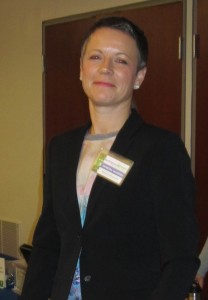 Vanessa Warren will add to the already impressive delegation skills BurlingtonGreen takes before various levels of government. BurlingtonGreen has become the go to community organization you want to be part of in this city. This year two of the impressively active community leaders joined the board: Vanessa Warren who formed the Rural Burlington Greenbelt Coalition that brought the landfill dumping in north Burlington to a grinding halt when she delegated to Burlington and Regional Council and Gloria Reid who brought some impressive thinking to the creation of a Community Engagement Charter. We wish Ms Reid had stayed with that project and gotten it out of the clutches of the upper reaches of city hall where is will suffocate from the dust on the shelves it sits on.
The BG AGM brought in Donna Tranquada to talk to them about the successful effort to stop the application for a quarry permit in Melacanhom Township which is north of Caledon and south of Collingwood.
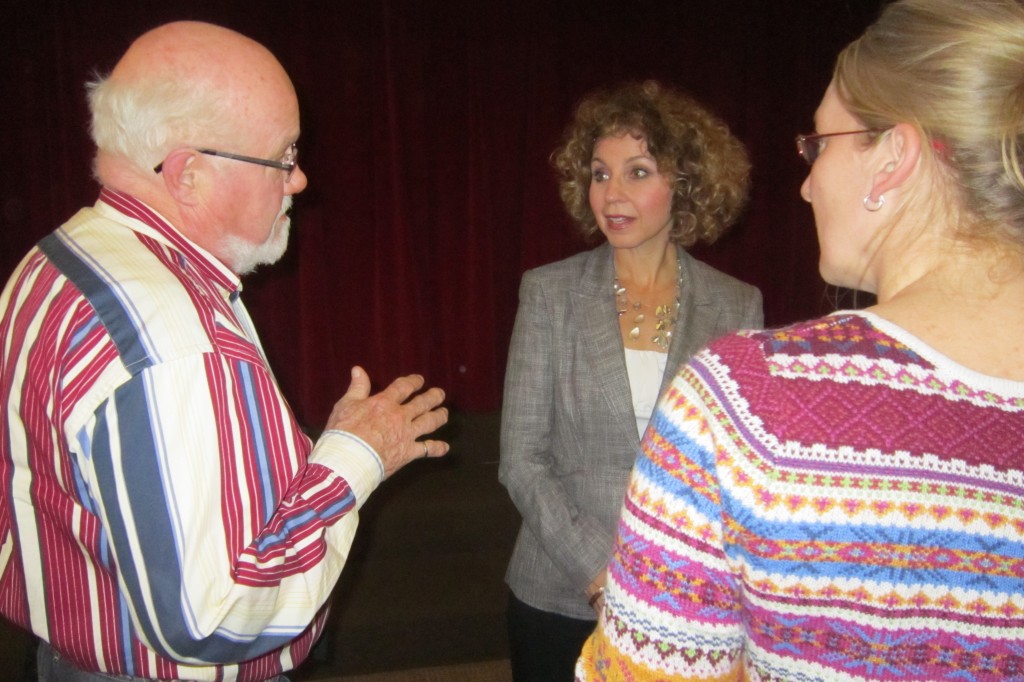 Monte Dennis in conversation with BurlingtonGreen guest speaker Donna Tranquada. Dennis was part of the Pickering airport battle more than 25 years ago. He could tell Tranquada some real horror stories. What was really interesting and odd was that Ms Tranquada made no reference to the PERL success with the Nelson Aggregate fight – that win paved the way for the change in the way the public reacted to any expansion of quarries and their development . The Nelson win was the first time a quarry looking to expand was turned down. The Food and Water First people knew a good thing when they saw it though: they had Sarah Harmer out to their events as well
 Donna Tranquada had a great story to tell. A year to the day of the BG AGM, a group that was formed to protect thousands of acres of farmland from a planned massive quarry operation learned that the company had withdrawn its application to develop a quarry. It took more than a year to beat back the proposal put together by an American, Boston-based hedge fund, that was buying up property in the township. Donna Tranquada had a great story to tell. A year to the day of the BG AGM, a group that was formed to protect thousands of acres of farmland from a planned massive quarry operation learned that the company had withdrawn its application to develop a quarry. It took more than a year to beat back the proposal put together by an American, Boston-based hedge fund, that was buying up property in the township.
When that company began buying up farm land they said they wanted to create a large, world-class potato farming operation. Property by property they told farmers what they were doing and got to the point where they had purchased more than 30 farms. “It didn`t take long” Tranquada explained “for word to get out in that rural community that something was going on.” The company, called Highland had been incorporated in Nova Scotia, and had begun using pressure tactics on some of the holdouts – meeting with farmers and putting a cheque for more than $1 million on the table and saying the offer was good for just 24 hours. The community began to get uneasy.
Then came the announcement: Highland had filed an application with the province for the largest quarry in Canadian history on some of the best farmland in Ontario and at the headwaters of five river systems. The mega Quarry would have sprawled across 2,316 acres and would have plunged 200 feet below the water table on a 15,000 acre plateau of Class 1 farmland. The massive open-pit limestone quarry would have put rare agricultural soil and precious water resources at risk in Melancthon Township.
One of the studies showed that the quarry would have to pump out 600 million litres of water a day forever. You had to be in the room when Tranquada used the word forever. She is a bit over 5ft 5 inches and she literally spit out the word.
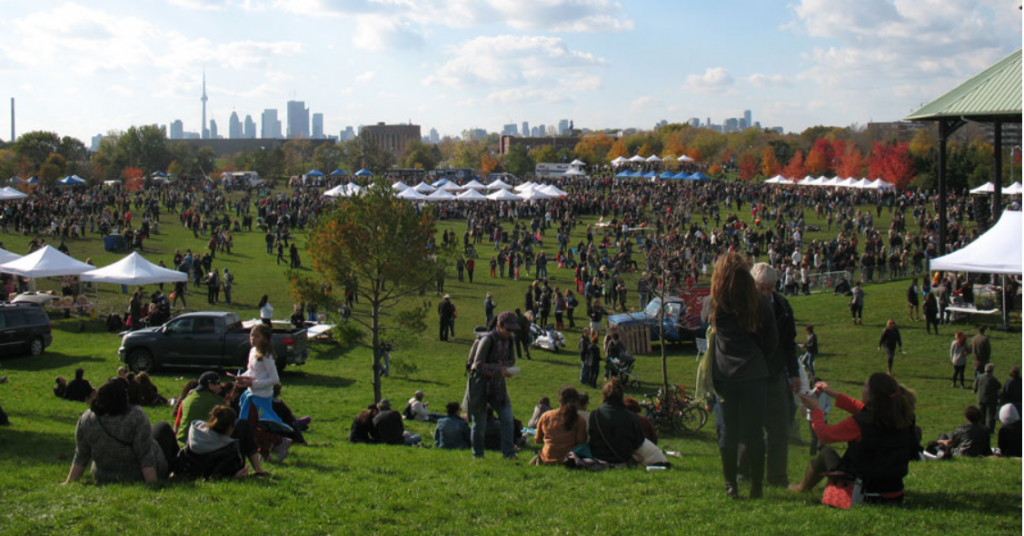 You start with a great location for a public gathering. Donna Tranquada`s talk was “meat and potatoes” for the protest movement crowd – it was a crowd like this that stopped the Spadina Expressway in Toronto; that stopped the extension of the Gardiner Expressway in Toronto through the Beach community and parts of Scarborough. The same demographic stopped the first attempt to put in an international airport in Pickering.
When Burlington was threatened with a highway being rammed through the Niagara Escarpment close to 400 people showed up at the Mainway Arena on Walkers Line – and the province eventually backed off. The province will have another go at an Escarpment highway and it will take a different generation to fight that battle.
The Melancthon Township battle used ideas that pulled together the interests of the rural communities with the needs of the urban dwellers – then used food as the bridge between the two.
Chefs from Toronto and other urban centers made soup, thousands of bowls of soup that was both a fund-raiser and the way to connect farmland where food is grown and the stomachs of the people in cities who have to eat. The event became known as SoupStock and it drew crowds in the tens of thousands.
It was a magnificent collection of ideas and dedicated people who showed once again that the public can prevail. Highland had employed one of the biggest public relations companies in North America who knew they were up against a public that was driven and focused – rarely can that kind of energy be beaten.
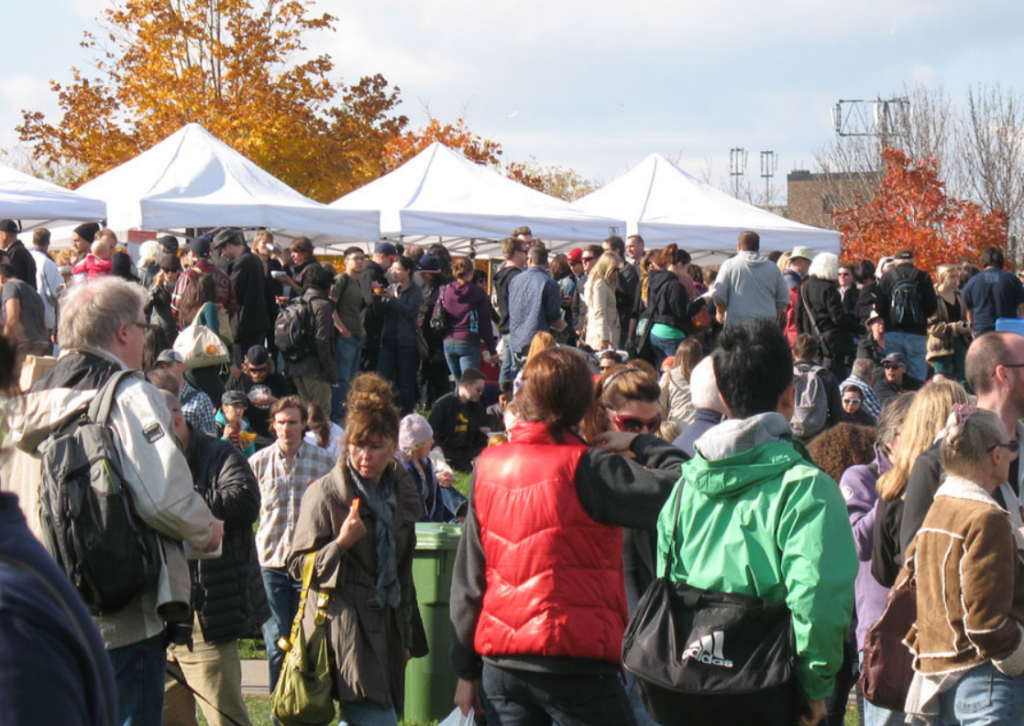 That draws great crowds. Tranquada said that on one Saturday there were 40,000 people who dropped into a large park in the east end of Toronto to hear the story about the quarry application. If you believe in an idea and you can get your troops out – you can prevail.
Burlington has a fight on its hands that is critical for the city and relevant to every municipality that has a small airport and problems with landfill sites. While many expect the city of Burlington to prevail through the several levels of appeal that can be expected of the decision that decided the city had the right to have its site bylaw adhered to, the bigger question is – what des the city do with that property once the Court issue is resolved. There are hundreds of tonnes of landfill in the more than 100 + acres of property and a runway that is in the process of being paved.
Tranquada, surprised some people who asked where they could get one of the signs that she had with her. “I just have the three “she explained – “that was all I was able to carry on the subway and the GO train. A high-profile media personality trudging from Toronto to Burlington on the GO train is what they call “waking the talk”.
Tranquada is now part of a group that goes from community to community with the message: “There aren’t a lot of victories these days, but the mood-altering blocking of the monster quarry in Melancthon Township in potato country a year ago was a brilliant model of how to get stuff done. The alliance of urban ecos, farmers, foodies and chefs showed the power of partnering, bridged the messy city-country divide and ultimately triumphed over a Boston-based hedge fund… Plus, it made the point with the mass soup-athons, that protests can be jubilant and very digestible – and that determination and positivity are our best weapons.”
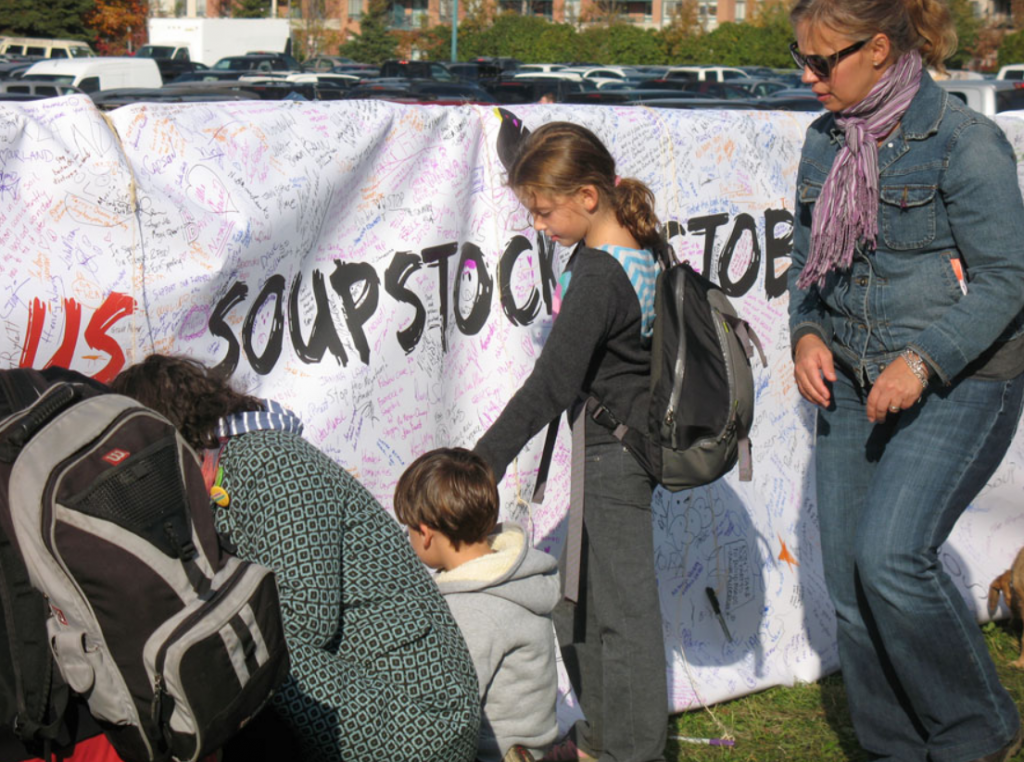 And those crowds sign a petition – and with public reaction like that – the company wanting to quarry prime farmland withdraws their application. With the farmland in Dufferin County saved, the group, known as Food and Water First, decided to get to the real core issue which was the Aggregate Resource Act – it sets the rules for the extraction of aggregates. Turns out Ontario has the weakest regulatory environment governing resource extraction in Canada, enabling anyone to pillage the very resources Ontario needs to drive parts of its own economy.
The Food and Water First people have taken the position that the aggregate producers require a “social license”, that is the permission of the wider community, to do what they do. That concept will be hard for some of the old-timers in the industry to digest but it is a changing world – Global Warming is real and both food and water will become the most critical elements of our society continue to exist.
There is legislation and policy that govern the activities around resource extraction in Ontario. The Ontario Sand, Stone and Gravel Association (OSSGA) chose to push for keeping things as they are instead of helping to create a document that would lessen rural strife and have them become a responsible corporate partner. OSSGA members will continue to be challenged by communities in which they want to do business and will have to defend their businesses. Instead of doing better and voluntarily recognizing that prime farmland and source water regions should be off-limits, OSSGA has clearly belittled the efforts of thousands of Ontarians who have so reasonably engaged in this policy development process. The public at large will continue to withhold that social license until there is modernized legislation.
Nothing in the Aggregate Resources Act (ARA) review document would prevent another Mega Quarry application tomorrow, destroying forever thousands of acres of our most productive farmland and putting the control of unbelievably vast amounts of Ontario’s fresh water in danger.
Food and Water First wants to see new legislation that recognizes prime farmland as a strategic provincial resource and protect source water regions by eliminating industrial extraction in those regions.
These social activists believe that as an engaged public, both urban and rural, we have had all kinds of assurances from MPPs that the thousands of people had been heard. Now is the time for those MPPs to act, not just speak.
A productive board meeting; the story of a community action that saved precious farmland – and the week wasn’t over. BurlingtonGreen went on to get the city behind their community garden project – but that’s another story.

Milla Pickfield is a Nelson High School graduate who decided to spend a year working in the community, helping her Mother with her business and doing volunteer work before she headed to university. She volunteered to try writing and did two piece for us; one with the Chief of Police and an interview with the new Hayden High school principal.
Milla’s most recent piece for us is on the school board, that organization that directed much of what she has done for the past ten years. Her attendance at a Board of Education meeting was a bit of an eye opener for Ms Pickfield.
 November 26, 2013 November 26, 2013
By Milla Pickfield.
BURLINGTON, ON. I got to my meeting of the Board of Education an hour early; when you have to use public transit or rely on your parents for transportation – your time is not your own
I wasn’t at all sure where I was supposed to go and asked the woman at the reception desk where the meeting was being held – school board meetings are open to the public.
 Milla Pickfield is a Nelson High graduate – understanding the proceedings of the school board was not something high school prepared her for. I was half hoping she could point me in the right direction and expected someone would supply me with an agenda. I was pointed in the right direction – without an agenda. And I had not brought anything else to read.
Half an hour after I arrived, Dr. Frank J. Hayden and his wife also showed up with Jacqueline Newton from the new high school. I had already interviewed Ms Newton and was delighted to meet Dr. Hayden and his wife.
When I was doing some research on what school boards do, I came across a quote that put everything in perspective for me. Sir Ken Robinson once said: “Everybody has an interest in Education.”
Those words resonated with me. I know that I am very interested in education which is why I was very excited to go to a Board of Education meeting. I didn’t know what it would be like, I didn’t know what the people would be like, and I didn’t know what they would talk about. After the meeting, I was left with more questions than answers.
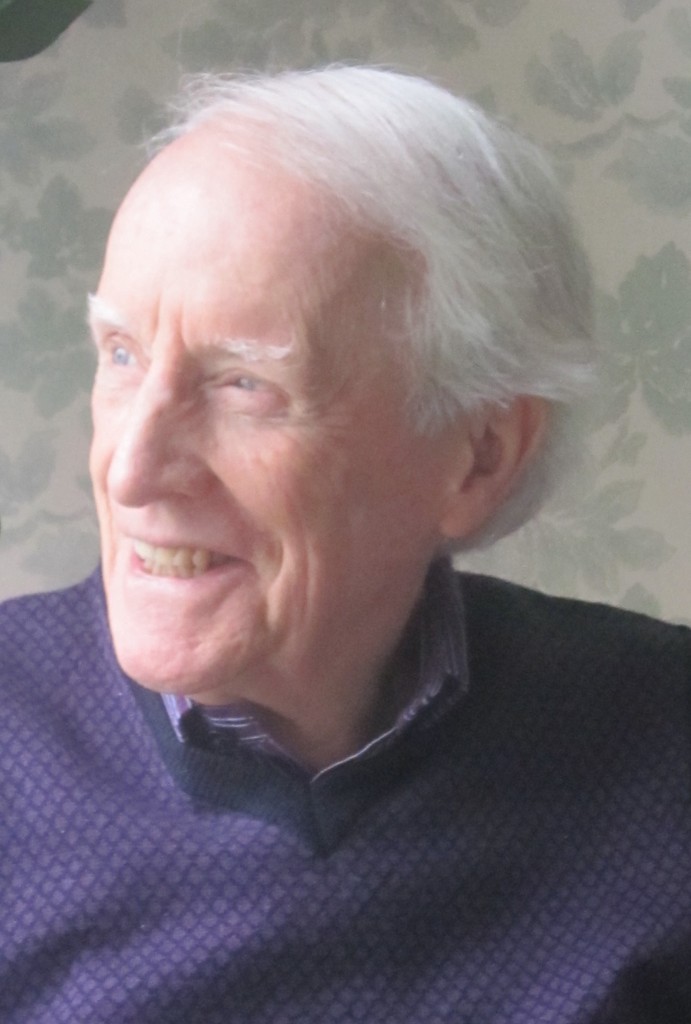 Dr Frank Hayden – spoke to Board of Trustees who had named the new Alton Community High school after him. It wasn’t a very satisfying experience for me. I don’t usually need help nor do I willingly accept it most of the time, however I did expect someone to greet me upon arrival at the large room in which the meeting took place. That was not the case. No one greeted me or any of the other three students in attendance. Everyone was crowded around Dr. Hayden, which was certainly understandable.
No one approached me and asked if they could help and without an agenda I found myself spending most of my time hurriedly trying to write down all I could and hoping to understand a little later from the notes I was taking. Working without an understanding of what was going on I was forced to pay extra attention to everything they were saying which still did not help. Most of the language used was part of my vocabulary however the fashion in which they used it was not.
I believe myself to be an educated person. I have done everything expected of me; I went to elementary school and high school and graduated from both with relatively high grades, what I lacked in book smarts I made up in common sense, and I can follow many conversations with adults and form and deliver an opinion. I could not follow the meeting of the Board of Education.
I wondered: if I could not follow the meeting how would other people in Burlington understand the proceedings. What about someone who just moved here from a different country; someone who just decided (like me) to drop into one of those meetings; someone with very little knowledge of the education system but with a hunger to learn; ever keep up with the meeting?
The impression I left with was that the meeting was separated into four parts:
First were the speeches which were delivered by Dr. Hayden and a student attending Hayden High.
Second part was passing a whole lot of bills and not talking about any of them.
The third part was mainly focused on speaking about some bills that were to pass and problems they’ve encountered.
Finally there was the freelance period of time, or at least that’s how I understood it. In this time anyone was allowed to bring forward an issue they though important and speak about it to the council.
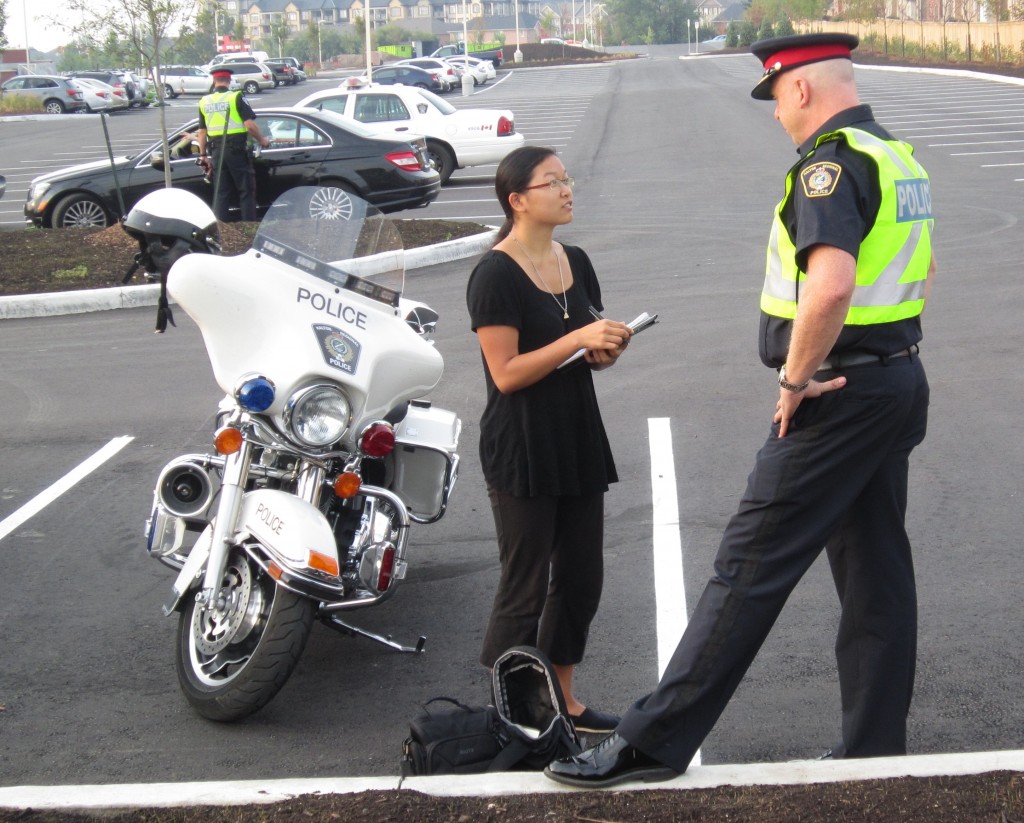 Milla Pickfield started an internship as a journalist interviewing the Chief of Police. She ‘aced’ it – wasn’t able to do as well at understanding what gets done at Board of Education meetings. I found the second and third parts of the meeting the most confusing. Perhaps it was the fact that I didn’t have an agenda, so the bills were hard to follow, or maybe it was just the extremely fast pace of the meeting but I have to wonder how someone from the public, like me, would ever follow a similar meeting to that one.
The Board of Education controls a large chunk of our lives, along with a lot of our tax dollars, and we should be able to be a part of the process and understand what’s going on. What I experienced was personally disappointing. I went in with a desire to learn all I could, perhaps understand how our education system works, and see important decisions being made.
I left the meeting feeling as if there was something wrong with me; I should have been able to understand what was going on. I read, I am informed and I understand the English language. When I think about the several hours I spent in the Board of Education meeting, I feel like I wasn’t really there.

 November 27, 2013 November 27, 2013
By Pepper Parr
BURLINGTON, ON. The province is doing everything it can to get you into an electric car. Announced this morning at the Oakville GO station – electric vehicle charging stations are up and running at five GO stations in the Greater Toronto and Hamilton Area to make it easier for drivers to use environmentally friendly transportation.
 Starting today, Aurora, Centennial, Lincolnville, Oakville and Whitby GO stations will offer charging stations for electric vehicles. Starting today, Aurora, Centennial, Lincolnville, Oakville and Whitby GO stations will offer charging stations for electric vehicles.
Ajax, Burlington, Pickering, Erindale and Clarkson GO stations will open electric vehicle charging facilities in early 2014.
 ChargePoint cards are available now. why not put everything on the existing PRESTO card Charging a car will be free for the first month; after that, each charging session will cost $2.50. Electric vehicle users can wave a credit card or a Chargepoint smart card over a card reader to pay for their electric vehicle charging access.
$2.50 a charge? It cost me $68.74 to fill my tank.
 The ultimate electric car charging station: Solar panels shaped like trees with plug-ins for cars – why not fill GO station parking lots with these things? The provincial government says the new stations are part of a three-year pilot program, which may be expanded depending on demand.

 November 27, 2013 November 27, 2013
By Staff
BURLINGTON, ON. You know the feeling when you hit a great drive, that smooth effortless “ping” sound of the ball hitting the centre of the club face and it felt so easy. Well there is nothing effortless in the world of long drive. These hitters put everything they have into each drive and live for the thrill of the long ball, searching for that rush of hitting a 400 yard drive. Some call the world of long drive the extreme of golf and with music blaring as hitters blast drives the conventional notion of “quiet please on the tee” is counter productive to the adrenaline wave the hitters are riding.
 Fareen Samji experiencing the smooth effortless “ping” sound of the ball hitting the centre of the club face. A contingent of 40 long drivers from all over the world including USA and South Africa descended upon Mazatlan, Mexico for the 2013 ILDC International long drive championships at the Marina Mazatlan golf course. Burlington residents Fareen Samji and Stephen Lowe were part of the contingent of Team Canada hitters. Samji, 39 and a Pedorthist at Burlington Orthotic Centre in the current ILDC Canadian women’s champion and Lowe, 46 a sales manager with PPG paints is the current ILDC Canadian Senior men’s champion.
Not many driving ranges can accommodate the length of these hitters so the hitting “grid” was the 18th hole, a relatively flat 420 yard long by 49 yard wide fairway marked up like a football field.
The hitters competed in the individual events (men’s, women’s and seniors ) as well as a team event. “In a traditionally solo sport, the team element makes this championship truly unique” say directors of the ILDC, Rick Benoit and Bill Stark. “Long drive is intense and action packed and delivers that element of awesome that every golfer searches for when hitting a drive,” says Gerhart Cotzee, captain of Team South Africa who brought a strong contingent with them to Mazatlan.
In the individual event, 2012 World Champion, Ryan Winther of the US awed the crowd with drives of 394 yards beating Niilo Schonfeld, of Toronto and Henry Roodt of South Africa won out over Bill Stark from Port Rowan, Ontario. In the women’s event current women’s World Champion Heather LeMaster of the US defeated Fareen Samji of Burlington, ON in the women’s final by 4 yards. “Losing is never fun, but being able to keep pace with the world champion and coming short by 4 yards makes me very proud. I hit the ball really well all week, and had a few equipment changes just prior to going down to Mexico and it paid off big time, “says Samji.
But the story of the week belonged to Team Canada in the Team Finals. Each team comprises of 5 hitters. Three men hit first, then the women hit against each other and then one senior hitter rounds out the team. Team Canada hitters were Ryan Hawkins (captain ) of Woodville, Chris Mason, Etobicoke, Nilo Schonfeld, Toronto, Jason Davies , London (alternate) Fareen Samji and Stephen Lowe of Burlington. Each hitter hits a set of 6 balls and the longest ball that comes to rest inside the 49 yard wide grid is counted. The team score is the cumulative total of the longest ball of the five hitters.
The US team were favourites to win with their key hitters being current REMAX women’s World Champion Heather LeMaster and 2012 men’s world champion Ryan Winther both of whom had won their individual titles earlier in the day. However, Team Canada showed focus and grit as they hit their way to the championships. Due to the double knockout format of the tournament, Team Canada had to beat Team USA twice in the championship round as the US Team had advanced to the finals undefeated. Team Canada had suffered a loss at the hands of the Americans in the preliminary rounds by a margin of 6 feet. “Losing by 6 feet after a total of five hitters really hurt and we wanted another shot at them” said Stephen Lowe of Burlington and current ILDC Canadian senior men’s champion.
 Stephen Lowe, Ryan Hawkins ( captain ), Fareen Samji, Jason Davies, Nilo Schonfeld, Chris Mason drove the long ball to win the International Long Ball Championships in Mexico.
But the road was not smooth for Team Canada. Team captain Ryan Hawkins and the current ILDC Men’s champion suffered a neck injury on the range and had to withdraw after the third round. Alternate, Jason Davies of London, Ontario stepped in as a substitute. “I’m an athlete and we always push through the pain” said Hawkins, a firefighter in Georgina, On. “But I had to do what’s best for the team and I knew that Jason could step up at any given time and get the job done.” Davies, a seasoned athlete, London Knights and Western Mustang alumni was ready for the challenge. “Once the first ball flew off the club perfectly I relaxed and got into my groove.” Davies answered the call handsomely and delivered incredible 350 yard drives under pressure.
“Knowing we had to beat Team USA twice was stressful, but we were pumped up and knew we had it in us. They had only beaten us by 6 feet the first time and we wanted it more than they did” said Chris Mason of Etobicoke, On. Mason. “Chris was on fire and we have such a good camaraderie that he helped push me to find my best swing” said Nilo Schonfeld of Toronto as he delivered blistering drives of 369 yards. “Nilo’s job was to stay close to Winther and he was clutch for us all week. He stayed calm and consistent in every round and peaked at the finals,” says Team captain Hawkins.
When the women went up against each other it was Burlington’s Fareen Samji who shined in the first final with a 295 yard drive out hitting current world champion Heather LeMaster. Samji had earlier finished second in the women’s final after losing to LeMaster by 4 yards. “I wanted another chance to hit against her and I got it. You don’t get to hit against a world champion many times and I was stoked. I was pumped up and full of adrenaline and totally focused. It felt really really good to win,” says Samji.
Ultimately, anchor hitter, Burlington’s Stephen Lowe sealed the deal as he hit the final ball to win the championship.

 November 28, 2013 November 28, 2013
By Staff
BURLINGTON, ON. Ray Rivers will not be with us this week. He will be on stage at The Pearl Theatre in Hamilton as part of the crew performing Modern Times, Almost a Musical.

The production is described as – these are their words not ours – Lost souls, smart phones, unattended packages. Saints, sinners, and an angel on call. Original music performed by Charly Chiarelli and Venesio De Salvo. Drama provided by Ray Rivers, Mike Queripel, John Darling, and Kaime Woody Sherman. Written and directed by David Laing Dawson. Produced by Gallery on the Bay.
A play that asks the question, “Is it possible to love Rob Ford and Mike Duffy at the same time, and, if not, well, who wants that last piece of pumpkin pie?”
Sounds like a bit of a lark for sure. If you’re a Rivers fan – and there are a lot of them – attend. If you’re not a fan and there are a lot of those as well, attend and throw buns on the stage. It’s all happening at The Pearl in Hamilton

 November 26, 2013 November 26, 2013
By Pepper Parr
BURLINGTON, ON. Diane Leblovic is not happy with Mayor Rick Goldring and gave him a piece of her mind in an email that was part of the City Council agenda Monday evening.
Diane and her husband Nick have been protesting the running of the Chilly Half Marathon along Lakeshore Road in March of each year because the race prevents a lot of people from getting out of the streets they live on that exit onto Lakeshore.
The Leblovic’s delegated as a tag team along with a half-dozen other Lakeshore residents – not everyone was opposed to the race being run along Lakeshore.
What had Lady Leblovic in a snit was comments the Mayor made after she had left the room. The discussion on the use of Lakeshore road for the chilly Half Marathon was still taking place but the decision that was going to be made was pretty evident so they packed up their papers and left.
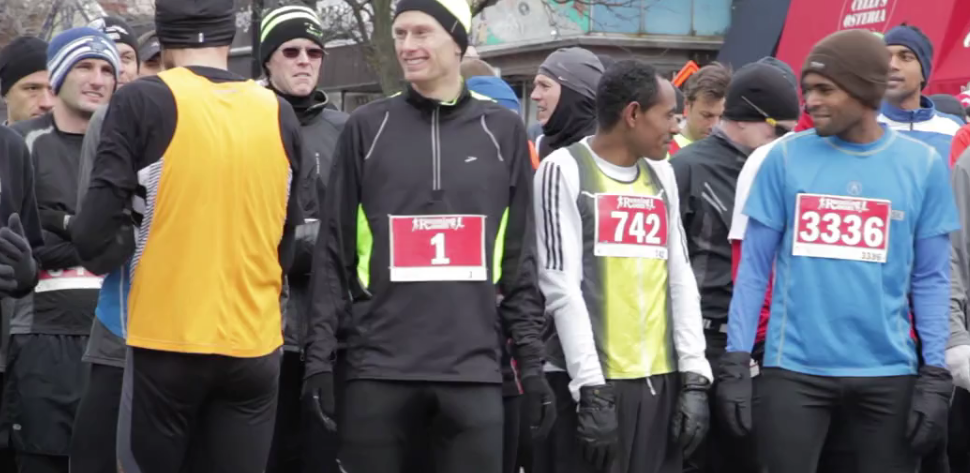 There were at least 3336 runners last March running close to the Oakville border and back. And just as many will be there in March of 2014 Mayor Goldring was not aware that the Leblovic’s had left the Council Chamber. It borders on unreasonable to leave a meeting at which your reason for being there is still being discussed and then later taking exception to comments made by the Mayor.
The Mayor did say that he had offered to meet with the Leblovic’s and when he realized they had left the Chamber he stopped talking. Mayor’s Goldring’s response was fair and decent. For Ms Leblovic to suggest the Council’s behavior was “unparliamentarily, unfair and inappropriate “ and that their not being in the room “provided a limited and one-sided picture of events and circumstances” is stretching things.
The Chilly Half Marathon delegations took up more than two hours when it was abundantly clear that staff had looked at the options and come to the conclusion that Lakeshore Road was the best place for the race.
In her email to a city hall staffer Ms Leblovic asked that the matter be deferred to the December 9th meeting because they will be “out of the country on the 25th for an important and long-standing personal commitment.”
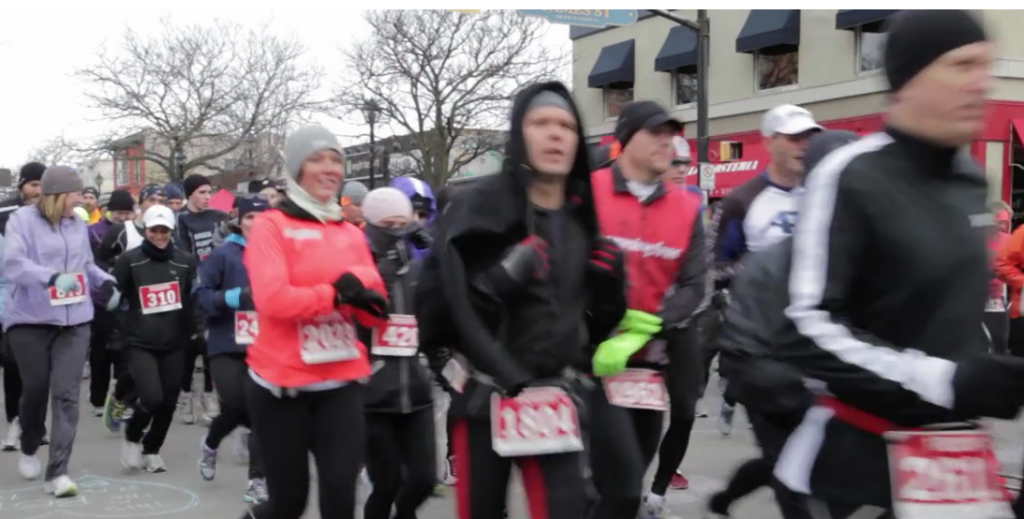 They just keep on coming – and making Burlington one of the most popular racing events in the province. The recommendations made at the Standing Committee were approved by Council – the Chilly Half Marathon will take place in March of every year for the foreseeable future.
Council approved a policy that has staff automatically approving events that take place each year. If a matter goes to a Standing Committee – it will be because staff felt something should be brought to the attention of Council.
The Leblovic’s can now plan for an event early in March of 2014 and arrange to be out-of-town. They could also walk part of the race or follow the lead from the Pastor of the Lutheran Evangelical Church and be out on Lakeshore road offering fresh fruit to the 5000 + runners.
Additional news stories on Chilly Half Marathon debate.
2013 race video
Standing Committee delegations

 November 26, 2013 November 26, 2013
By Pepper Parr
BURLINGTON, ON. There are times when you are the butt of the joke and the best thing you can do is go along with the laugh at your expense. It’s part of our political culture and the truly good politicians learn to laugh at themselves.
The people in the Beachway have an issue with their Ward Councillor and the way he voted so enthusiastically against what they felt was their interests. It was Councillor Craven’s enthusiasm for getting rid of all the homes that make up the Beachway community and the glee and smugness he displayed that just rubbed the people in the community the wrong way.
 As a Standing Committee chair, Ward 1 Councillor Rick Craven is as good as it gets. Handling delegations and accepting the ideas of other people – not as good. But he wins elections. Councillor Craven is the best Standing Committee chair the city has. He is a rabid advocate for Aldershot. Touch that community and you have Rick Craven to deal with. At a recent Standing Committee he used the phrase “how dare you” when some Members of Council disagreed with the amount of money he wanted to see spent on completing the Plains Road Village Vision.
And, Craven deserves credit for the way he has managed to upgrade Plains Road from what was once a highway that had all the speeding traffic that is part of a throughput road. Plains Road today is one of the most attractive roads in the city. The planters and other amenities make it a nice road to drive along and when it is completed and Craven has the bicycle lanes he wants, it will be a pleasant road to bike along to get to the Royal Botanical Gardens.
The Beachway residents had hoped their Council member might be as kind to them and their plight as he has been towards the Plains Road Village Vision but Craven has never liked the Beachway community – sees them as people who threaten the world as he sees it.
The Beachway, which draws more people than Aldershot will ever see, hasn’t had as much as a dime spent on plantings, park benches or a decent upgrade to the old rail bed that is now a walking path. Not much in the way of signage on the western end of the Beachway either
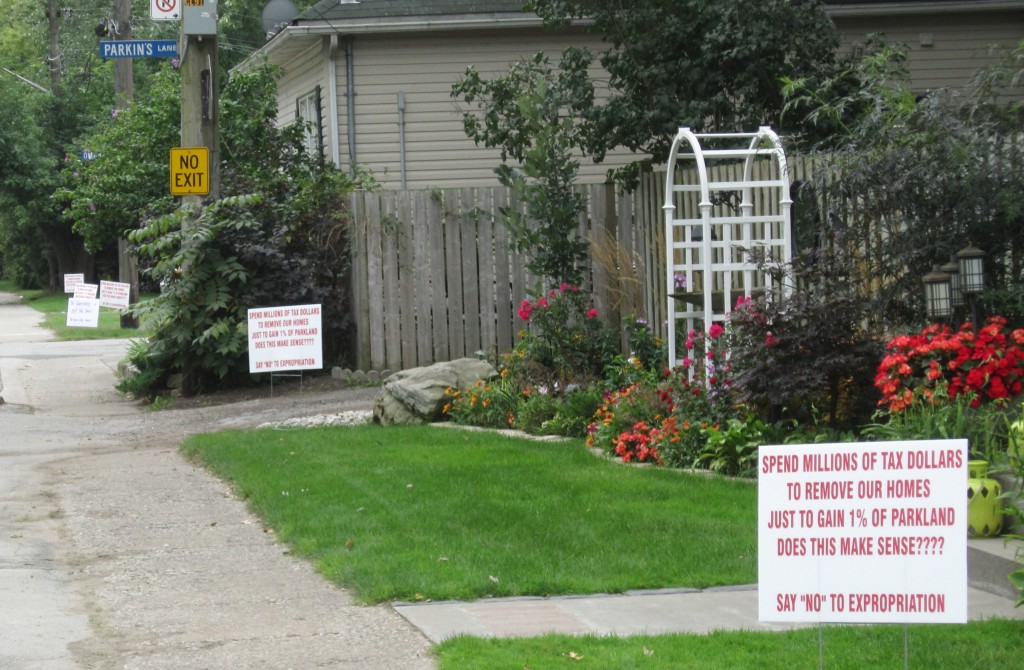 Trim well maintained homes – do we bulldoze buildings like this for park space? Katherine Henshell, a lawyer who maintained her office in the Beachway community for a time and explained to a Council Standing Committee that the “willing buyer/willing seller” phrase that was being tossed around was close to a joke. Council heard one of the most common sense explanations about how the Beachway community was being robbed of a fair value for their properties should they decide to sell.
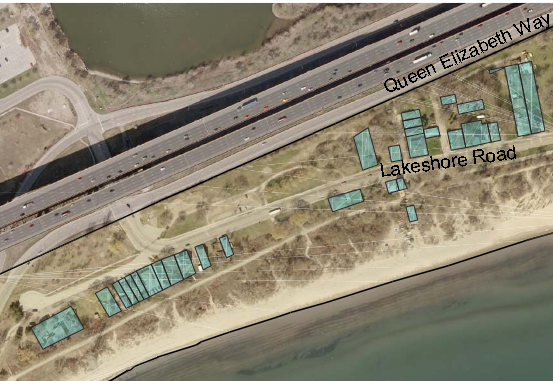 This is the location of the 30 homes the Regional government would like to at some point buy and demolish and turn into a park. They have a fight on their hands even though the Region won the first round. The community put up a good fight – the city, after a lot of debate, came out with a luke warm decision that sort of said there could be a community down on the waterfront but it didn’t have all that much punch to the motion that went to the Regional Council – which is where the decision on the Beachway was eventually going to be made.
When the issue went to the Conservation Authority the Beachway residents got a bit of a break. On a tie vote the Authority said they were not prepared to move forward without a budget in place to buy the homes that would have to go if there was ever going to be a park in the Beachway. The price to buy out the 30 home owners was at the $10 million point.
The debate then moved to the Regional Committee level where after hours of argument the Committee found that they could not come up with a recommendation everyone on the committee could agree on so it went to Regional Council without a recommendation – something quite unusual at the Regional level.
But when it was debated at the Region – it didn’t matter what argument was put forward – this item was going to be approved with the real push coming from an Oakville council member who put a motion on the floor.
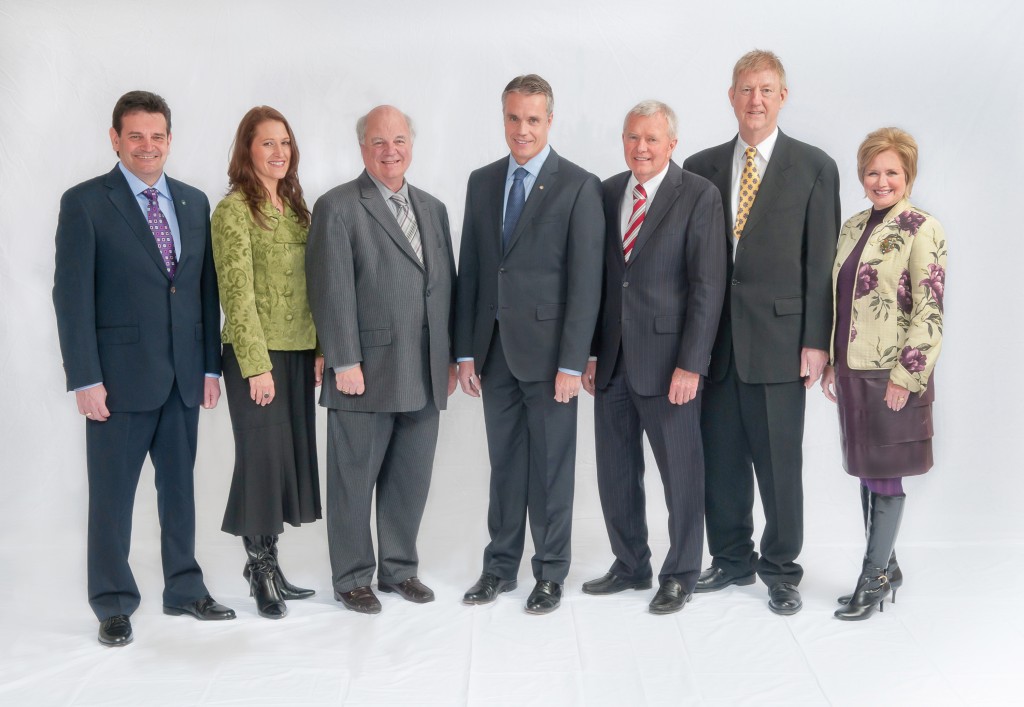 The significant seven had varying ideas with what should happen to the Beachway Park. some saw it as a place that needed to be made nothing but park while others thought it should continue as a small but tightly knit community. Dennison thought some of the properties could be redeveloped and new housing put in place. what was evident was the paucity of their creative thinking. There were all kinds of amendments and amendments to amendments but the drift was clear – this was going to pass. The Burlington crew did their best, however Burlington’s city council wasn’t really of one voice – and it showed.
Part of the motion that was passed has the Region developing a draft plan for the park and a process that would come up with a plan to purchase the homes from the current owners on a willing seller/willing buyer basis. Expropriation was off the table.
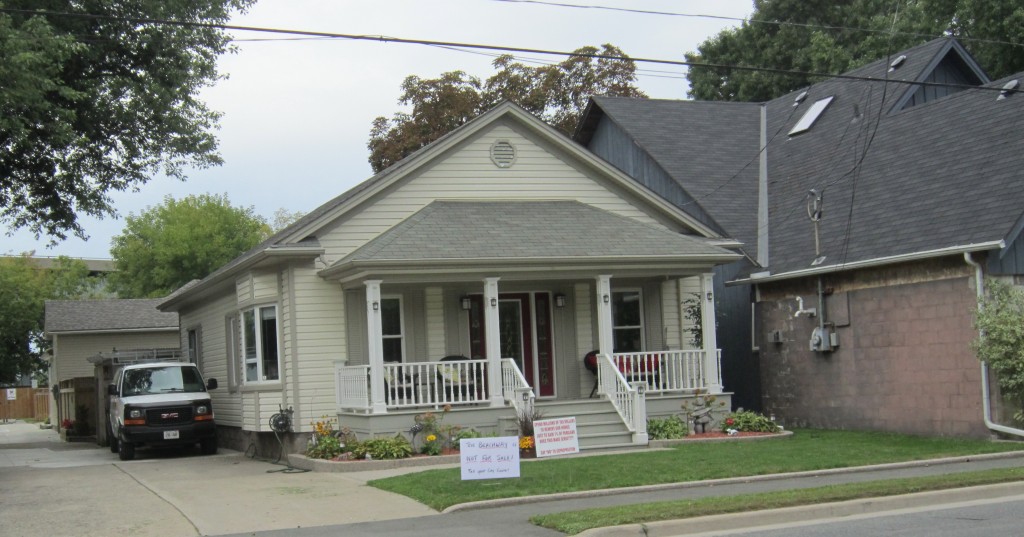 An attractive.ell maintained home in the Beachway – the owner struggles to ensure that it will be xxx The Beachway residents were crushed – but these are a resilient bunch of people who have that streak in them that the residents of the Toronto Islands have. That community was under threat for yours and a lot of the houses on those islands were bulldozed – but today there is a vibrant community on those islands that makes the space safe for the public and a delight to visit. For those who live on the Toronto Islands – the place is a paradise to live on.
Henshell, who lives a couple of houses over from where the ward 1 councillor lives (that must get awkward) needed to let Craven know that the Beachway community was not going to go quietly into the night. Depend on the small Beachway community to become a burr under the saddle that Craven rides into the election in October of next year.
There is already one candidate ready to file papers in January to run against Craven who may well choose to take a run at the Burlington seat when the province goes to the poll, as expected, in the Spring. Craven trounced Jane McKenna when she took a flyer and ran against him. With the right team, and Craven does have a team, he could beat McKenna.
Craven has also mouthed words about possibly taking a run at the office of Mayor; probably not a good career move.
Henshell’s proposal was more tongue in cheek than real. What was surprising was how some people spent real-time on thinking about how to deal with. To suggest that the ward Councillors property be turned into a park made a lot of sense to Henshell who argues that if her house could be turned into a park then there was no reason not to consider turning the ward Councillors home into a park if an argument could be put forward that had some merit. Henshell argues that her proposal has as much merit as the plan to turn 30 homes in the Beachway into a park.
Henshell explains that Bird Watching is the fastest growing recreational activity in the world. More people consider themselves birdwatchers than hunters, hikers or even skiers. A designated park for the purposes of Bird Watching would be a unique feature to Burlington which would grow tourism, create jobs and strengthen the economy. It creates an opportunity for Burlington to become a world renowned city recognized for the preservation, protection and study of birds and wildlife. Henshell neglected to mention that such a park would add to the city’s luster as the safest medium-sized city in Canada
She provided data that claims: some 46 million Americans are birders, their average age is 49 and they have better than average education and income levels. Just the kind of people Burlington wants to attract. 54% of birders are female and 46% are male. 72% of birders are married.
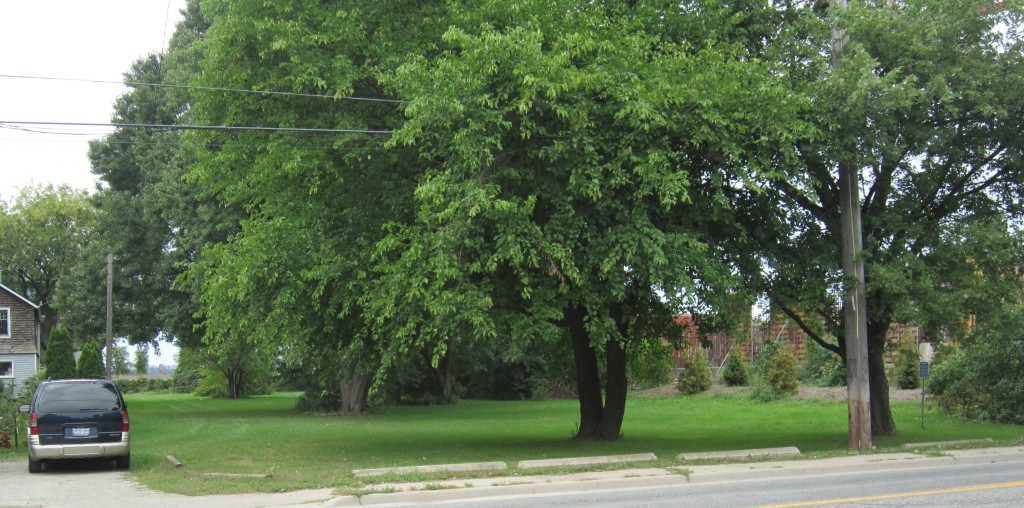 This lot once had a house on it. Its future might be to become part of a parking lot – none knows at this point what kind of a park would be created if all the houses were bought and torn down. This is a great demographic which Henshell is suggesting the city might want to reach out to with a place where people can spend time watching and identifying different bird species. It could become Point Pelee north if we do it right.
“Birders contribute $32 billion dollars in retail sales annually in the United States which generated $85 billion in economic benefits and created 863,406 jobs.” Burlington would surely want a piece of that pie.
“Bird watching is a therapeutic tool that provides social, emotional and physical benefits. Promoting this recreational activity within a senior citizen community can keep senior citizens engaged and active and has similar positive results as pet therapy.”
Henshell failed to propose that a branch of the Seniors’ Centre be included in the Bird Sanctuary. “Socialization and sharing observations and memories promote community and brings people together and reduces isolation. Studies continue to prove the enormous stress-reducing capabilities of animals. A simple connection to nature can provide an emotional benefit to reduce feelings of anxiety and loneliness.” The prime location for the Bird Watching Park would be adjacent to the Bird Sanctuary, as designated by Conservation Halton.
“There exists no public access to this Bird Sanctuary as it is bordered by private residences. A public portal to this Bird Sanctuary would allow Burlington residents to access the benefits of viewing birds in their nests during seasons of migration. As birds have migratory habits, location is key to allow for optimal viewing of rare birds”, explained Henshell.
“The existing Bird Sanctuary is located near the Royal Botanical Gardens and the Burlington landmark of Easterbrook. Tourism would thrive in this area as bird watching, flower viewing and nature viewing are complimentary pursuits.
“Moreover, there are a number of senior citizens homes in the area, some of which already provide transportation services to The Royal Botanical Gardens and which could expand this service to the proposed bird watching park.
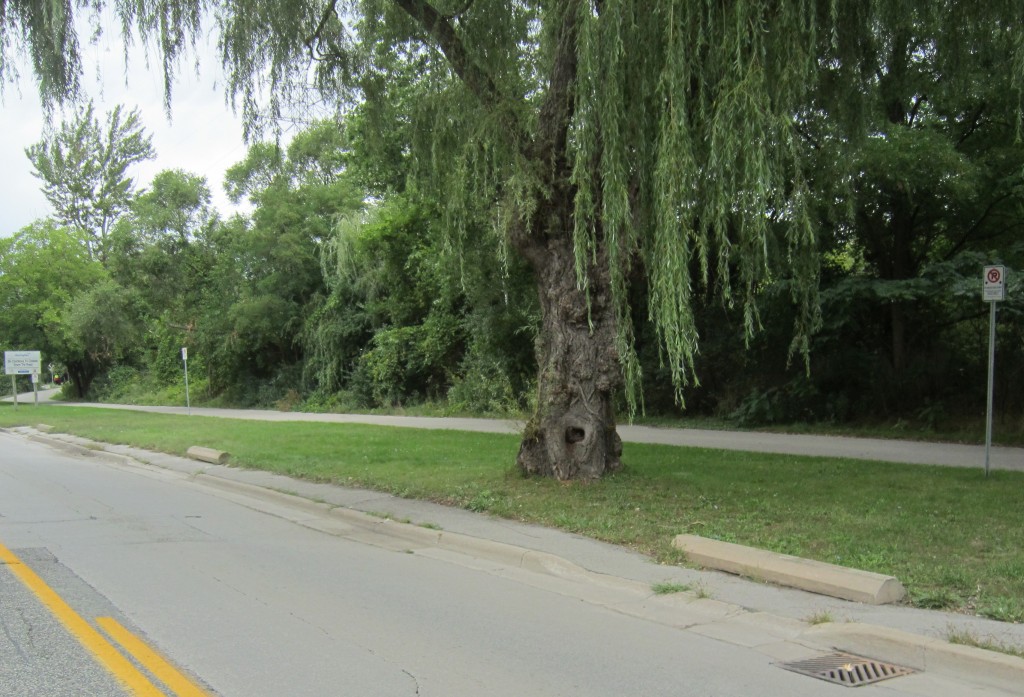 Those three indents in the curb were the driveways to houses that used to line Lakeshore Road. They were part of an active, vibrant community that has 30 homes left – which the Region would like to buy out over time and tear everything down and make it a massive park that will get used heavily for the summer months and become a no mans land in the winter. And we all know what happens in space that is not occupied or patrolled. “Of the private residents located adjacent to the Bird Sanctuary, one property is particularly isolated from the others and is large enough to support a public park for the purposes of bird watching. It is recommended that 614 Bayshore Boulevard, Burlington, Ontario be acquired to allow for park land. This property provides adequate space, viewing capabilities and a quiet tranquility which is necessary for birders to pursue this recreational activity.”
“Other adjacent properties either do not provide adequate land, do not have desirable viewing capabilities, have limited access or do not have self-containment capabilities and therefore cannot be considered.
City hall records indicate that 614 Bayshore Boulevard, Burlington, Ontario is the home of Ward 1 Councilor Rick Craven and his family.
“Economic growth through tourism maintains the current principles for the vision for the future of Burlington. The City of Burlington needs to take advantage of opportunities that meet city objectives while considering the needs and health benefits of the residents, adds Henshell in her proposal.
Burlington has always been fortunate in having citizens who see the potential for new ideas and aren’t in the least bit shy about putting those ideas into the public realm.
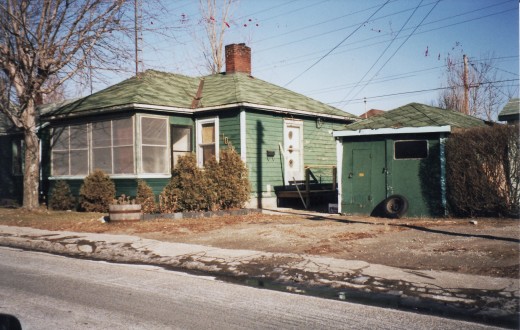 A typical Beachway cottage – one of many that lined LAkeshore road. There was nothing upscale about the structures but they were home to a community hat was vital and robust – part of the DNA still seen in the community. Neither the planners or the politicians fully understand the community. There was a time when Jack Dennison represented that part of the city. Henshell wants the city to hold a public meeting a) to discuss the need for a designated park for bird watchers; b) to support the acquisition of 614 Bayshore Boulevard, and, c) to allow for comments from the public to show their support of this initiative. She copied every member of Council as well as the top levels of the city hall staff and included Wild Birds Unlimited, the Toronto Ornithological Club, the Hamilton Parrot Club and the media.
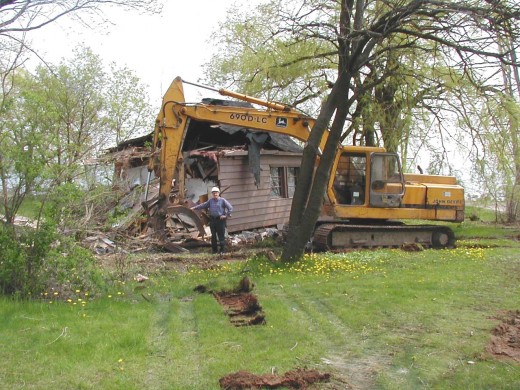 The last of the cottages that were on leased land to be demolished meeting its end with the back hoe. The Beachway Park residents will fight for the next few years to ensure that not one more house in the park get torn down. The Post took up the story and gave it significant coverage reporting that Henshell said she had no problem with “changing the Craven property into a park – he had no problem changing my property into a park”. Craven is reported to have said he has no intentions to sell and was reluctant to comment further but did say that: “We understand and know exactly what’s really happening here.”
The Mayor is reported to have said the “proposal” caught him off guard
Somewhere along the way people at city hall, who we assume are all high school graduates, forgot the work of Johnathon Swift and what satire is.
 The proposal was a satire with a touch of sarcasm that drew comments showing that some people at city hall don’t have a sense of humour. Not so funny is that there are people at the General Manager and Director level who are taking this seriously and have spent time wondering how to respond. The proposal was a satire with a touch of sarcasm that drew comments showing that some people at city hall don’t have a sense of humour. Not so funny is that there are people at the General Manager and Director level who are taking this seriously and have spent time wondering how to respond.
The Beachway community is showing a level of spunk that Councillor Craven specifically never did understand and Council as a whole was just not in touch with. The Beachway, for the majority of this Council, is not a real place, not something they can see as a place that could become a unique part of the city with a charm and mystery all its own. Burlington is still clinging to the ticky tacky bungalows and the monster homes plus all the every so correct communities we have now.
Councillor Lancaster, who as a young girl was not allowed to spend any of her time in the Beachway – it was not the kind of place a proper young woman spent time in – did however have it right when she said all the residents have to do is just not sell their homes and if they have to sell find a buyer who wants to live in a community like the Beachway.
This is one of those receive and file, send an acknowledging letter and perhaps pass it along to Councillor Craven for comment.
Additional articles on the Beachway and its council member:
Election material available.

 November 26, 2013 November 26, 2013
By Pepper Parr
BURLINGTON, ON. The way Mayor Goldring saw it – Burlington is basically getting a new hospital. The provincial government announced today that funding increases will amount to “hundreds of millions” more for the rebuild of the hospital
Health Minister Deb Matthews was in Burlington to announce major changes to Joseph Brant Hospital’s expansion project, but wouldn’t talk money or exactly how much the province will contribute to help fund those changes. What was a $312 million project is being re-scoped – up.
While the real number of beds being added along with the number of operating rooms wasn’t clear Mayor Goldring reported that beds were going to be 172 up from the previously planned 92 and nine new operating rooms.
 Architects rendering of what the re-build of the Joseph Brant Hospital will look like. The angle is looking east into the city. The structure has had an additional floor added. $60 million of that $312 is coming directly out of the taxpayers’ pockets – it shows up on your tax bill with another $60 million being raised by the hospital foundation that has done rather well in the recent past.
Matthews and hospital officials said they can’t be specific about how much more money the province is giving the hospital expansion because it would tip the hands of the construction companies bidding for the work. That’s a bit of a stretch – the major contractors are a lot closer to the people who determine those numbers than the taxpayers whose pockets the money comes out of
The hospital announced the plan’s major upgrades mean adding another storey to what was originally a six-storey newly constructed tower, adding beds although it was unclear how many are additional rather than revamped or what the hospital called “renovated” beds. The changes will also mean the emergency department and three floors of current surgical beds will move to the tower now.
Matthews and hospital officials said the changes essentially allow parts of the project that were to consist of renovations to now be built brand new, such as in the case of the emergency department.
 An architects rendering of the new entrance to the Joseph Brant Hospital which will now face the lake. The entrance will be off LAkeshore Road with the new parking lot just to the west of the hospital. “As planning got underway, the hospital realized it would get better value to build new rather than renovate,” Matthews said. The new emergency department for example, will be state of the art in meeting the needs of the community”, she said.
“The emergency department is the public face of the hospital…It’s better value (to build new) and it will better meet the needs of the community,” she added.
Jo Brant CEO Eric Vandewal said the main benefit of a new emergency department will be reduced waiting times — the same benefit mentioned when emergency renovations were talked of as part of this major expansion, and again in 2001 during a $12.6 million expansion and enhancement of the emergency department and cancer clinic. Clearly saying that wait times will be reduced is what the public wants to hear.
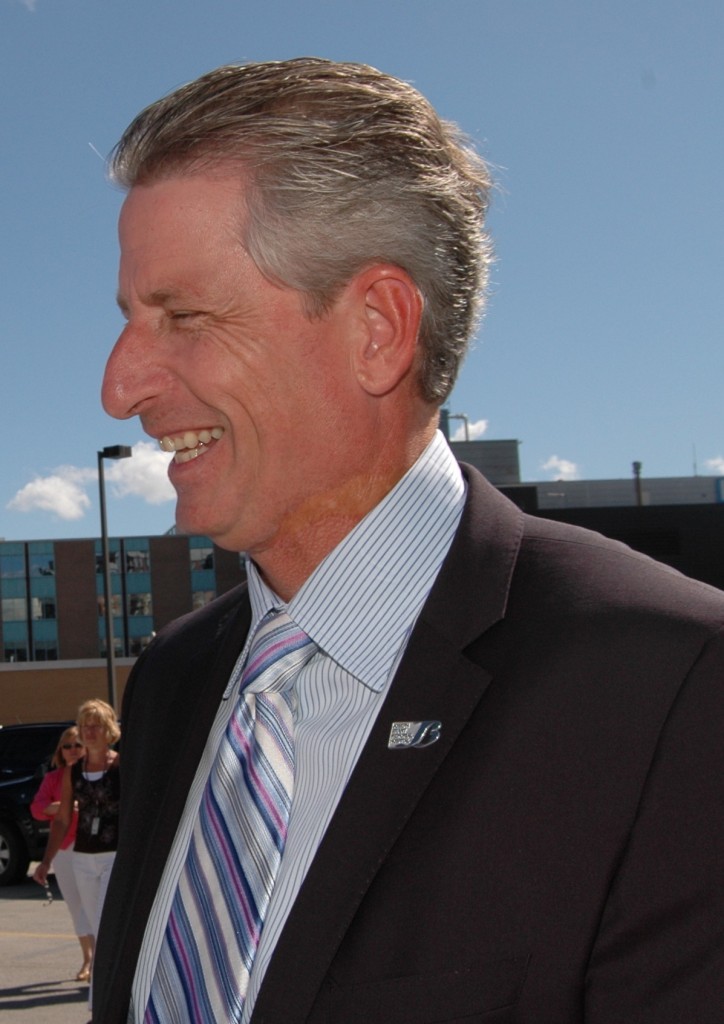 Joseph Brant Hospital CEO Eric Vandewal Vandewal, who has an earned reputation as a hospital builder, did very good work in Mississauga before he came to Burlington. One could almost imagine the arguments he took to Queen’s Park telling them he could deliver much better value if he was to build new rather than upgrade an older facility.
The hospital will hold a “topping off” event very early in December to mark the completion of the first phase of the Halton McMaster Family Medicine Centre structure, which is to have medical facilities on the ground floor with three parking levels above. The structure is being built to allow for an additional level of parking at a later date.
|

 November 25, 2013 November 25, 2013
By Staff
BURLINGTON, ON. Nominations haven’t even opened for the 2014 municipal election and there are buttons opposing the re-election of the Ward1 Councillor, Rick Craven.
 Local opposition in Aldershot to the re-election of Co Councillor Rick Craven roars out of the gate before nominations are filed. The people behind the buttons shown below haven’t stepped forward yet to say who they are but the proof we got of a button that is about to be manufactured is pretty clear.
Candidates can file their names with the city Clerk the first day of the New Year.
The document we got doesn’t say how big the manufacturing run is going to be.
Is this considered election material? Does the group putting these into production have to file documents with the city?

 November 25. 2013 November 25. 2013
By Pepper Parr
BURLINGTON, ON. A city hall with a sense of humour? We didn’t see that when a resident sent in a proposal that would turn a Council member’s home into a park – but that’s another story.
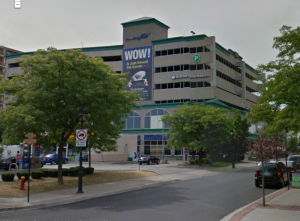 For the month of December you will be able to park here free and then for every Saturday during the year. Sound of Music week as well? Downtown Burlington has had a problem with parking and decided to change the channel and get people to focus on the downtown experience and forget about the parking.
To get people into this new way of looking at the parking issue the city decided there would be no cost to park downtown for the month of December and once we are into the New Year there will be no cost for parking downtown on Saturdays. That’s good news – the trick now was to get the news out.
Someone out there came up with the idea of doing a short video – it is a hoot. See for yourself.
Ward 2 Councillor Marianne Meed Ward got herself all worked up when she said: “You asked for it; we delivered: Park FREE in downtown Burlington on street and in city lots/parking garage for the month of December, and every Saturday starting in January. Free parking starts one day early this year, Sat. Nov. 30, in time for Black Friday and Shop the Neighbourhood events.”
Let’s see if it makes a difference. Will free parking get you downtown? Will the merchants along Brant Street decorate their stores this year – few did last year – and make it an experience. The price for the parking is right – now let’s see what the Burlington Downtown Business Association does with this new tool to draw the good people of Burlington into the downtown core.

 November 25, 2013 November 25, 2013
By Staff
BURLINGTON, ON. Oh dear, that was embarrassing. Brand new sign, new buildings, one of which is a high school and the wording on the sign has a mistake. Ouch!
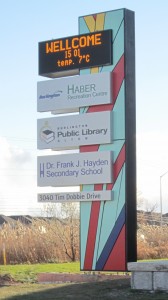 The sign installation wasn’t completed until just after 3:00 am the day of the public opening. How long will it take for someone to spot the error? We missed it – a reader brought the mistake to our attention. That will get fixed; perhaps someone will be told to sit in the corner and write out the word welcome 1000 times.
The credit for this “expose” belongs to Allan Harrington, who by the way. Has on more than one occasion pointed out some of our spelling mistakes. Don’t you just hate people like that?

|
|












































































 The proposal was a satire with a touch of sarcasm that drew comments showing that some people at city hall don’t have a sense of humour.
The proposal was a satire with a touch of sarcasm that drew comments showing that some people at city hall don’t have a sense of humour.













